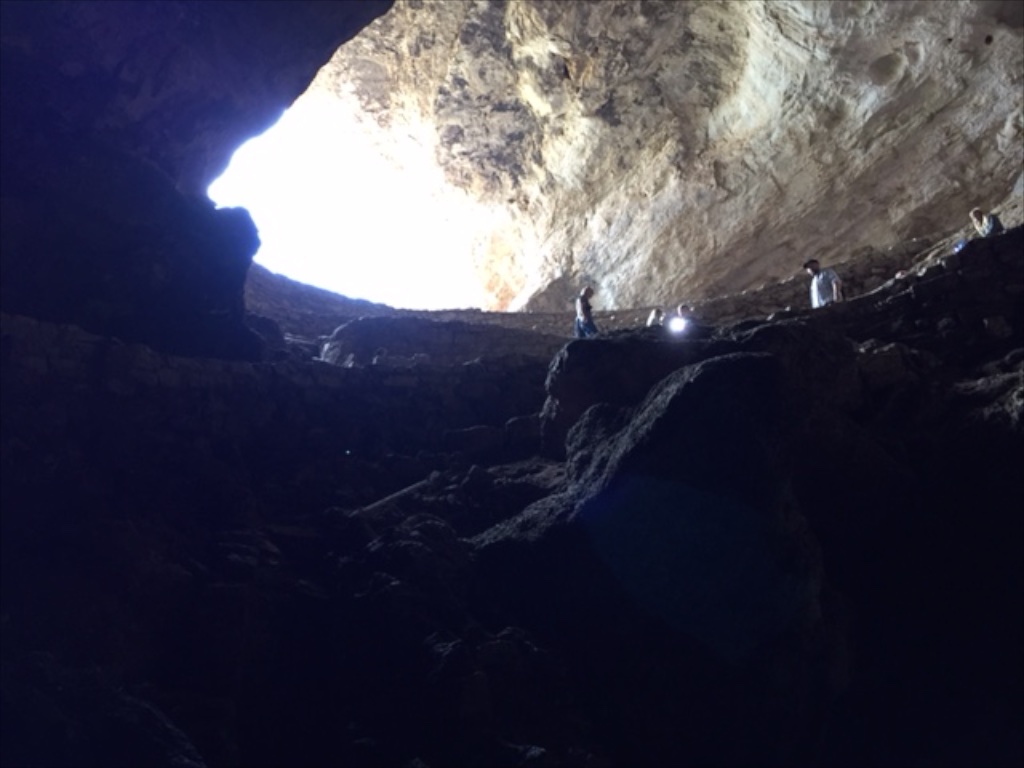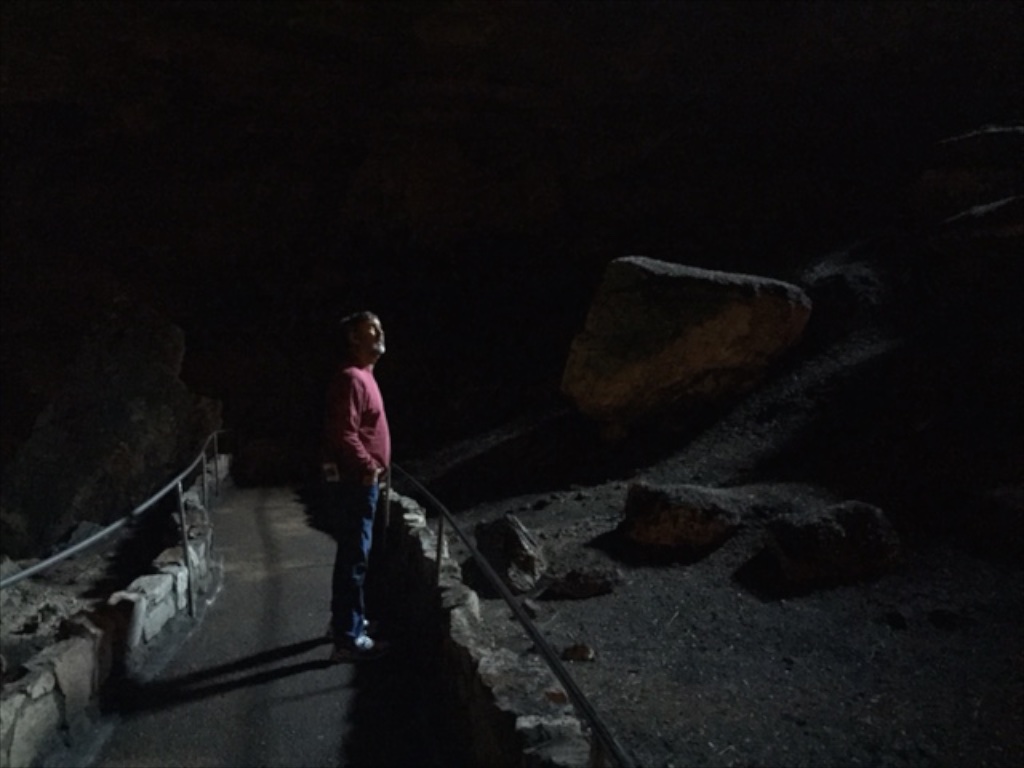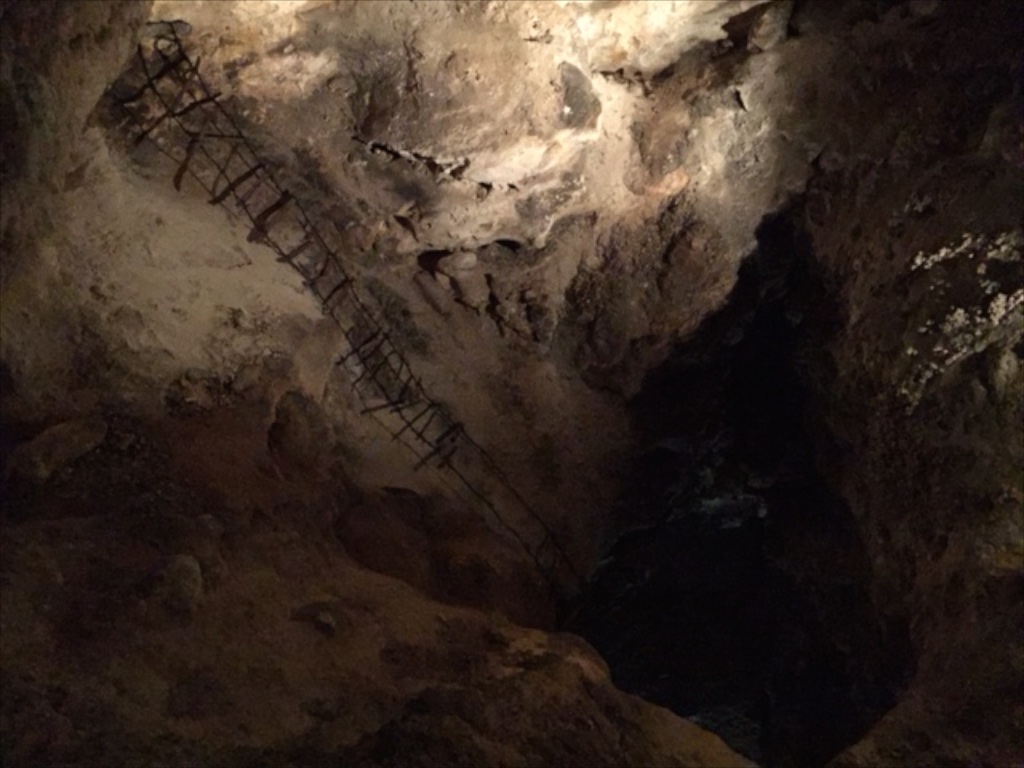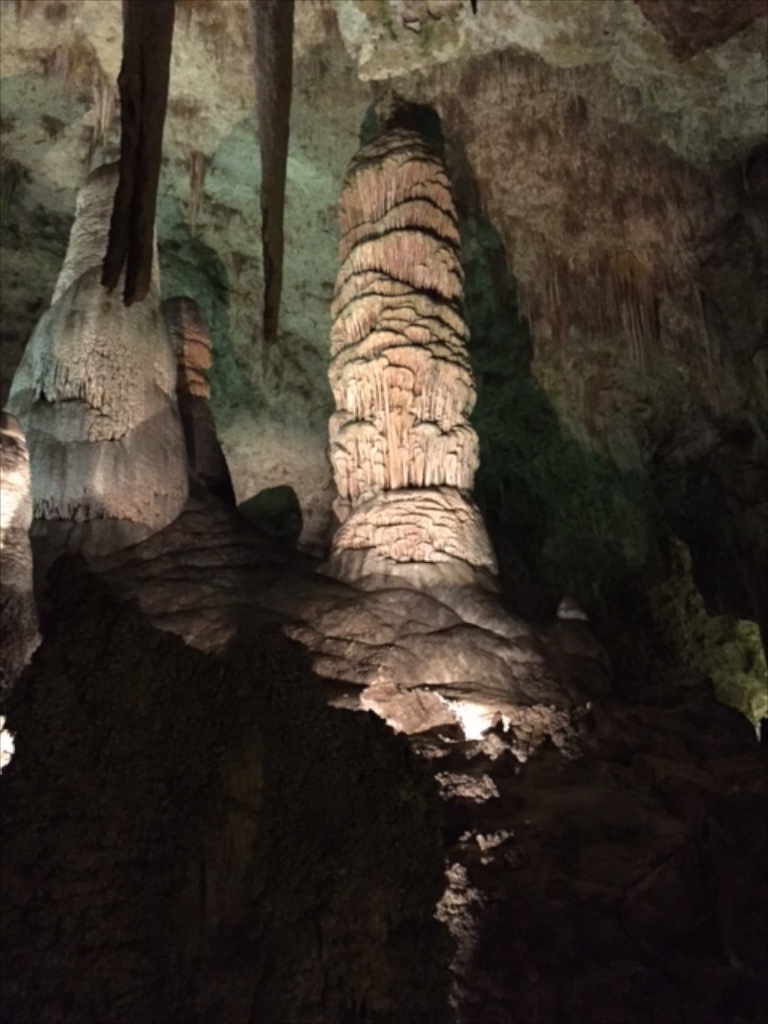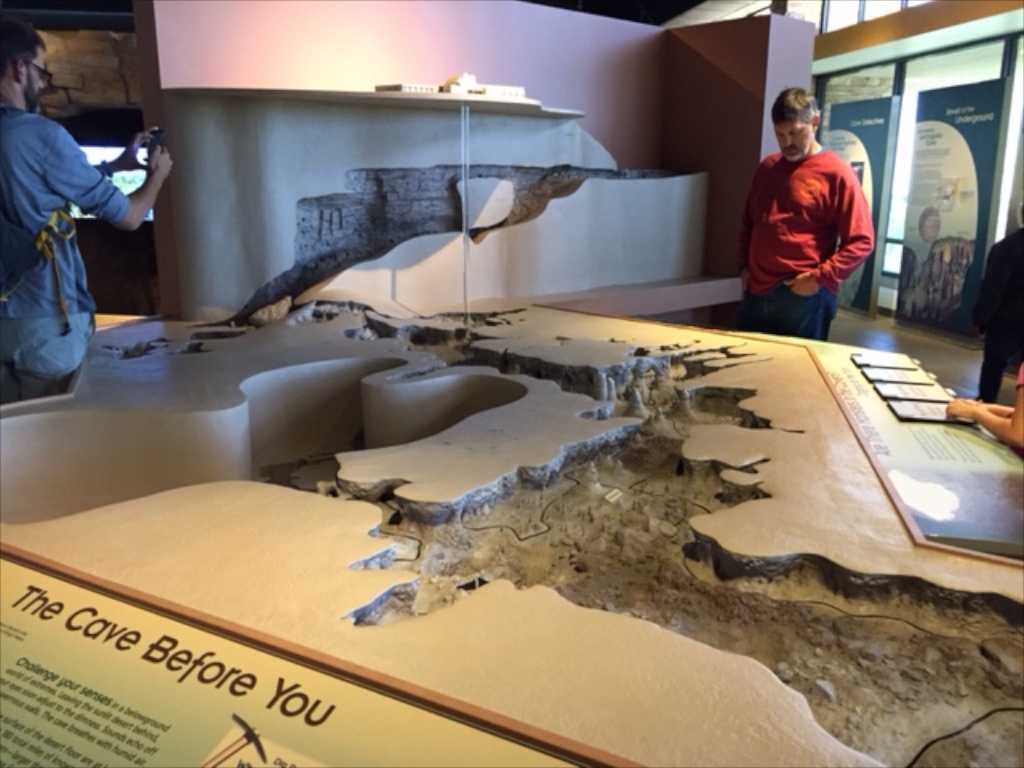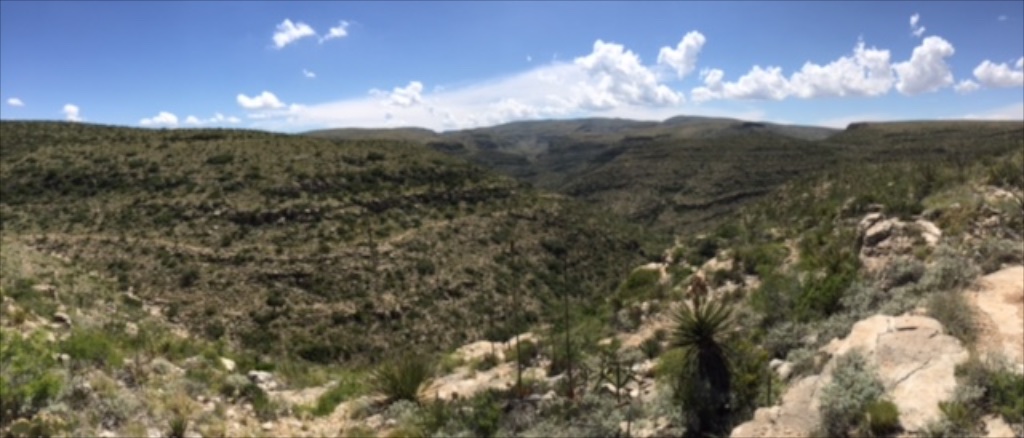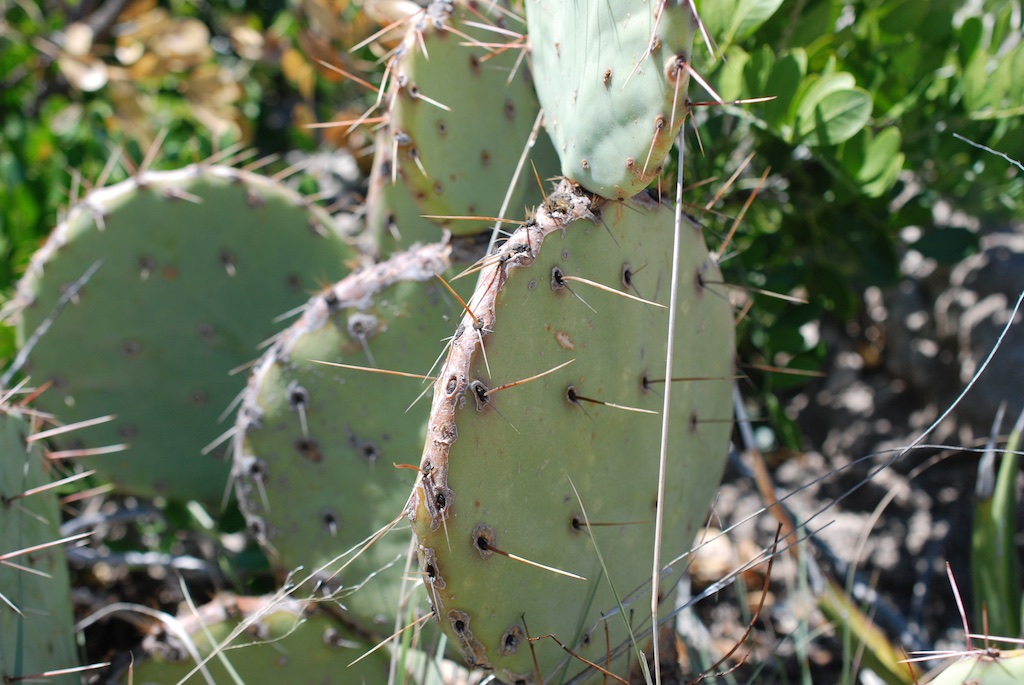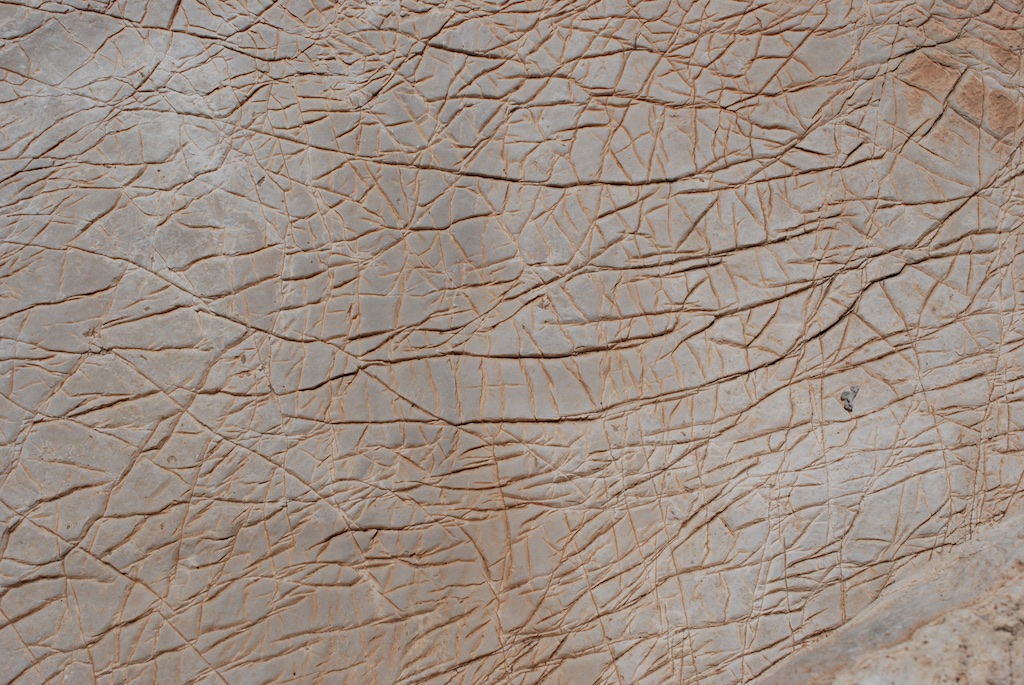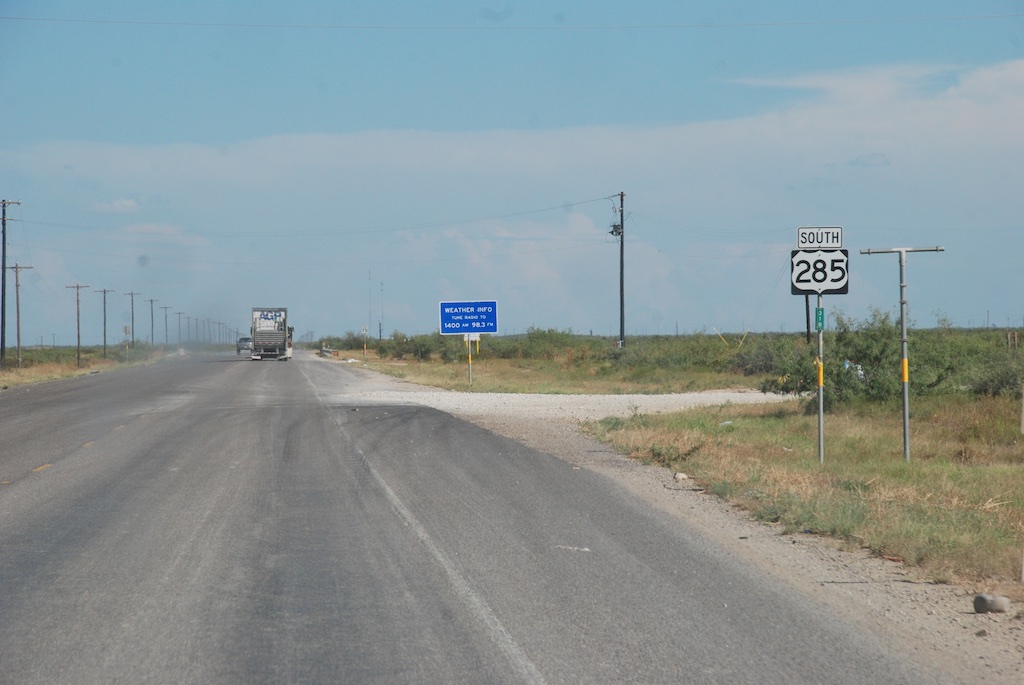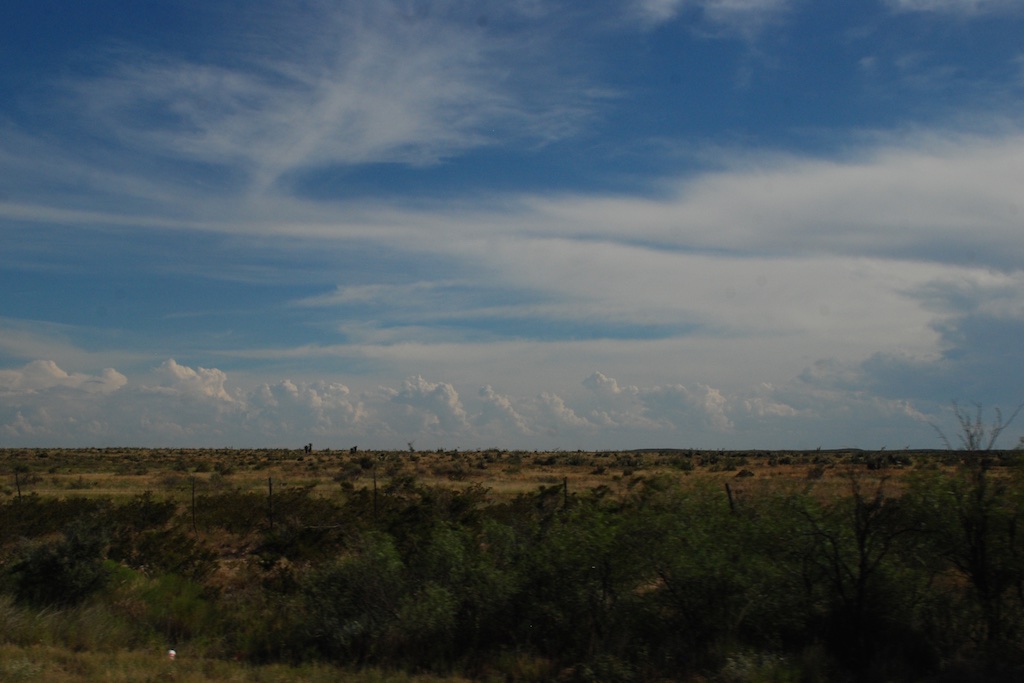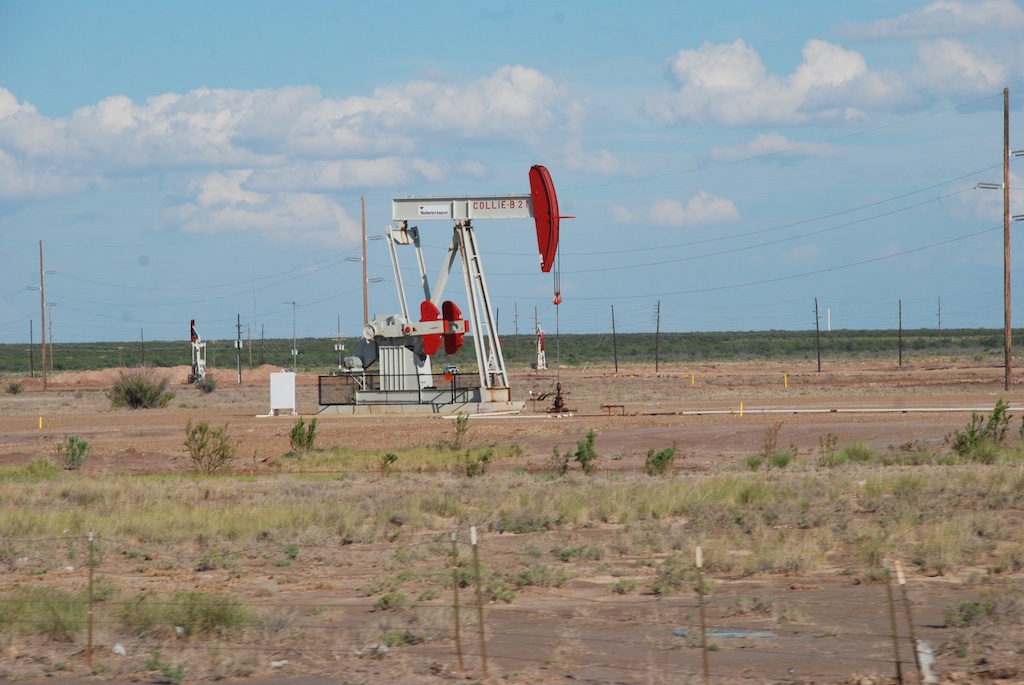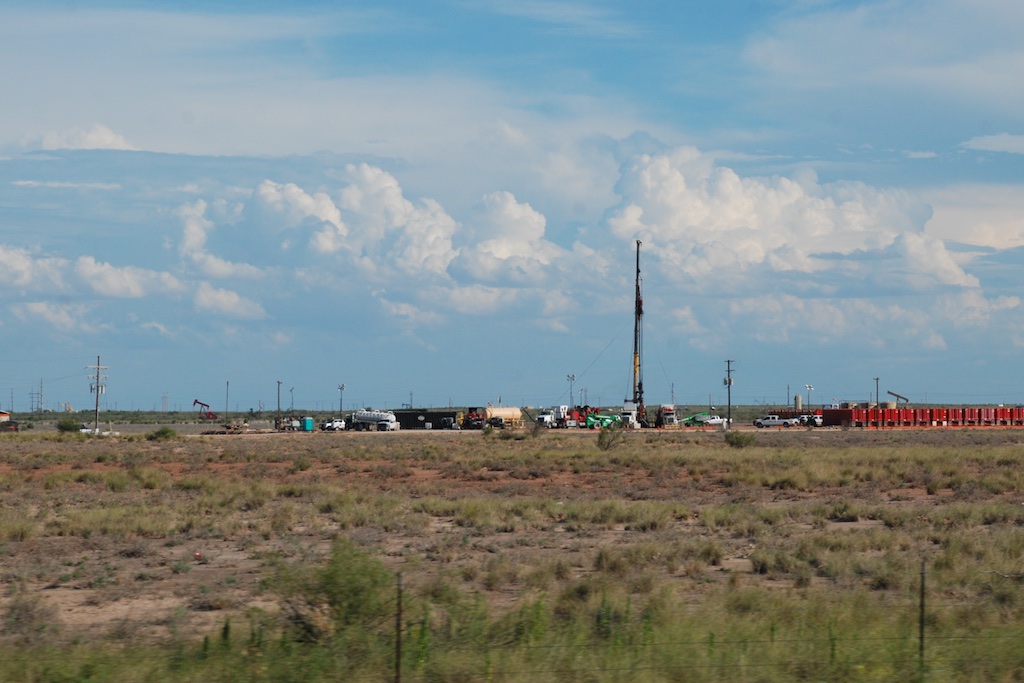Road Trip to Texas - Day 10 (part 1)
/It may seem silly to go back three weeks to finish up my Road Trip blogs, but I don't want to leave it unfinished. This blog has become my scrapbook that I would never do on paper. And I have had a lot of feedback that you who read the blog like the Road Trip series. I left off on Day 9, so here is Day 10, split into two parts because that's how the day seemed. I'll warn you now; there are a lot of photos. We were packing the truck. I wondered if Kirby would miss us for a little while because we'd been there for four days. Probably not, but I hope that she will remember me next time I see her.
We were packing the truck. I wondered if Kirby would miss us for a little while because we'd been there for four days. Probably not, but I hope that she will remember me next time I see her.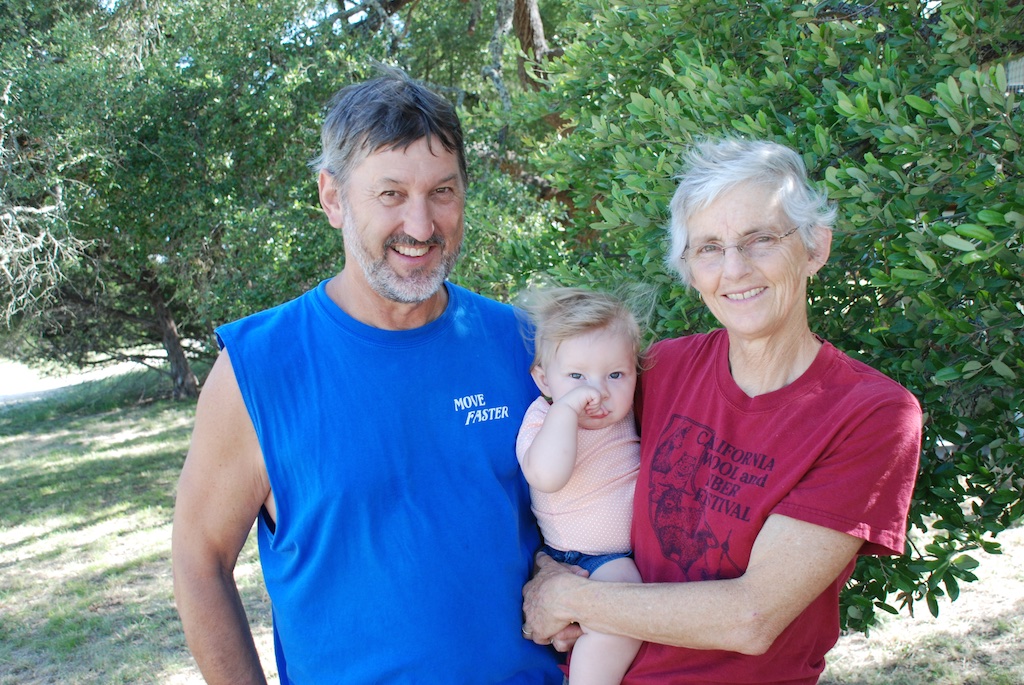 Saying goodbye was hard for Dan and me.
Saying goodbye was hard for Dan and me.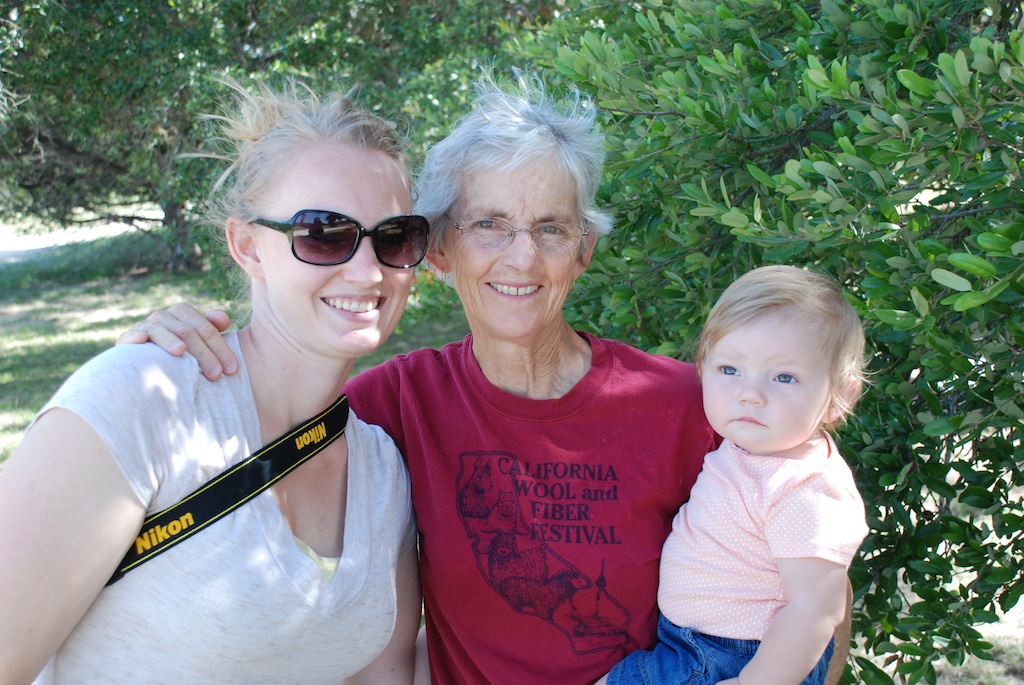
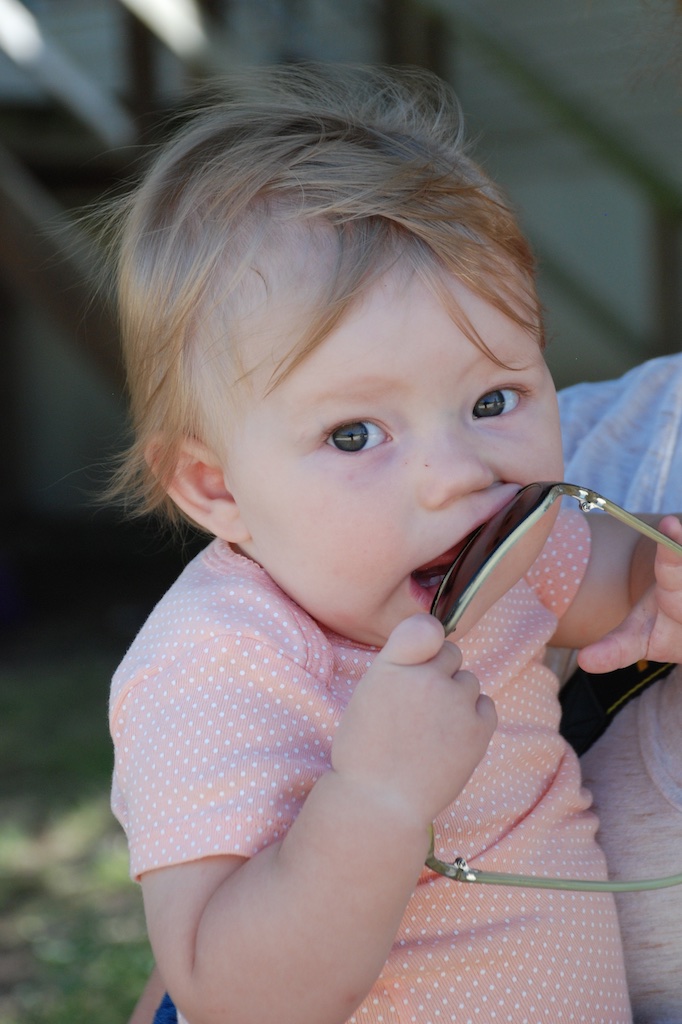 Time to leave. I needed to be home by Friday.
Time to leave. I needed to be home by Friday.
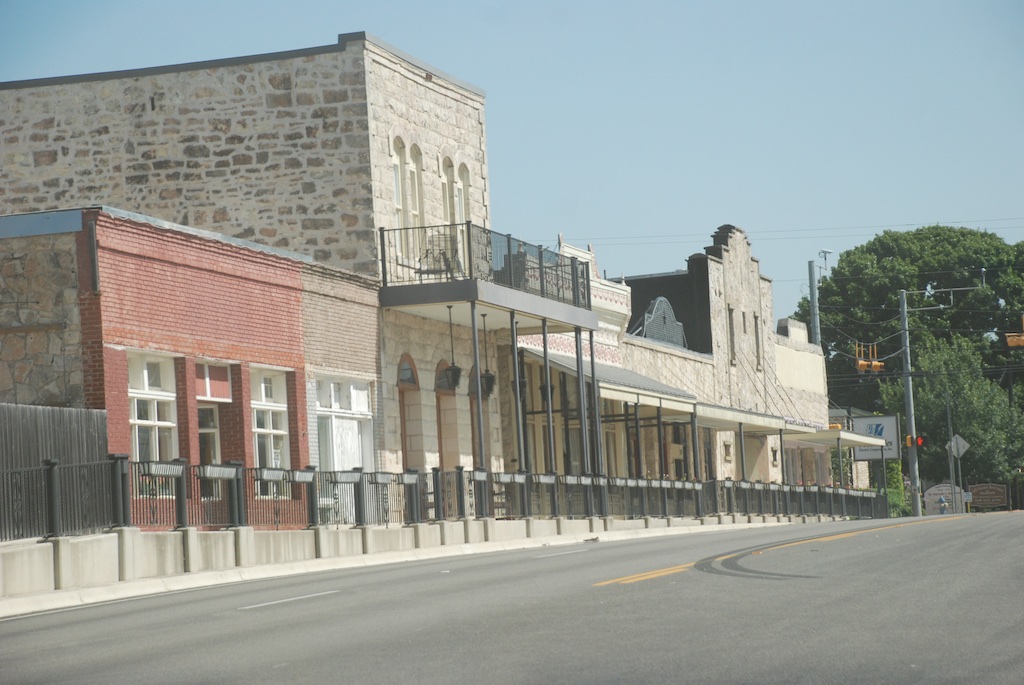 Now that it's been so long until I sorted this batch of photos I forget where some of them were taken. I think this is the town of Blanco, the closest town to where we were visiting.
Now that it's been so long until I sorted this batch of photos I forget where some of them were taken. I think this is the town of Blanco, the closest town to where we were visiting.
This is peach season in the Hill Country and wanted to make a stop and maybe pick up a few more gifts for farm-sitters.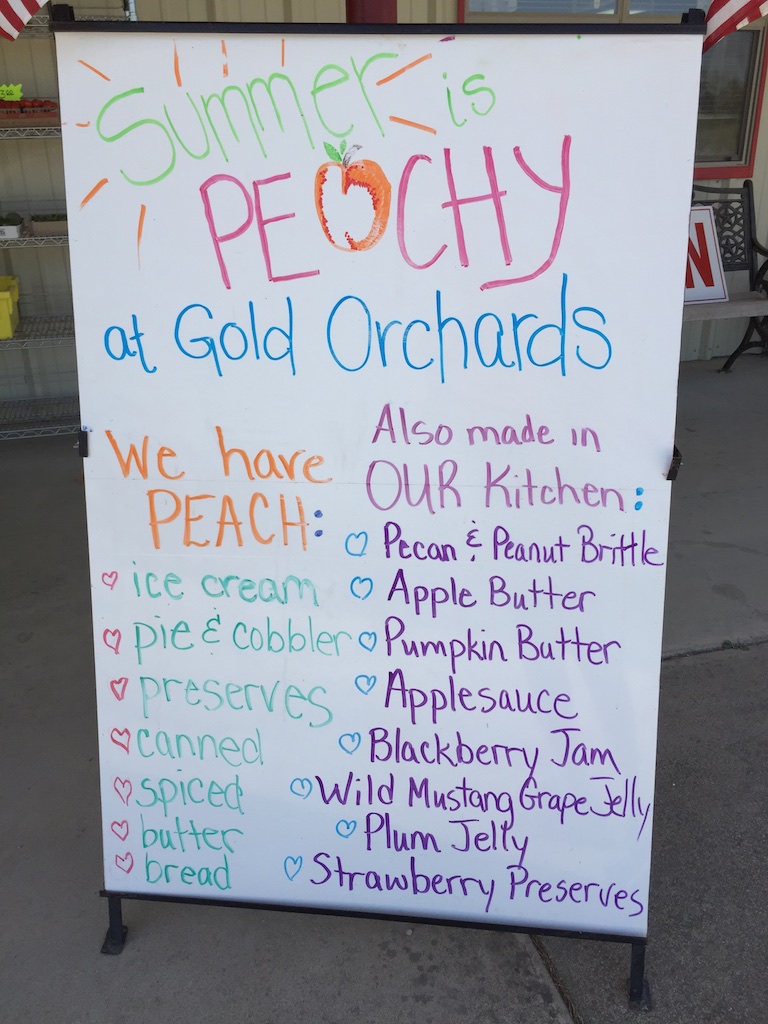
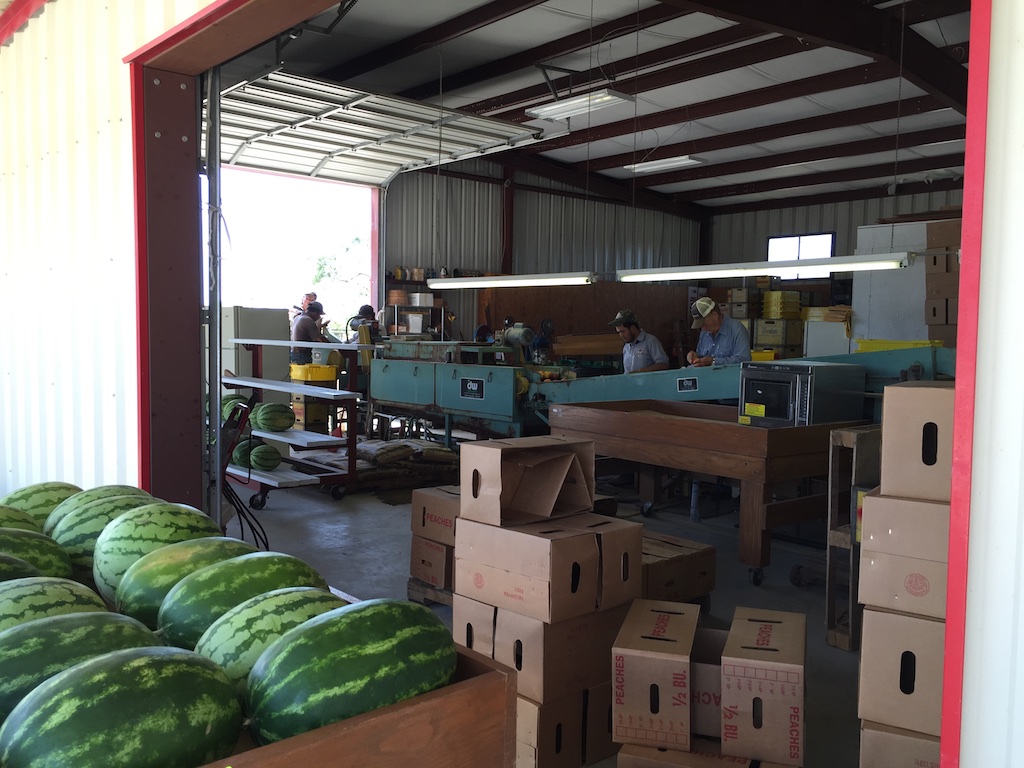 Here is where they sort the peaches.
Here is where they sort the peaches.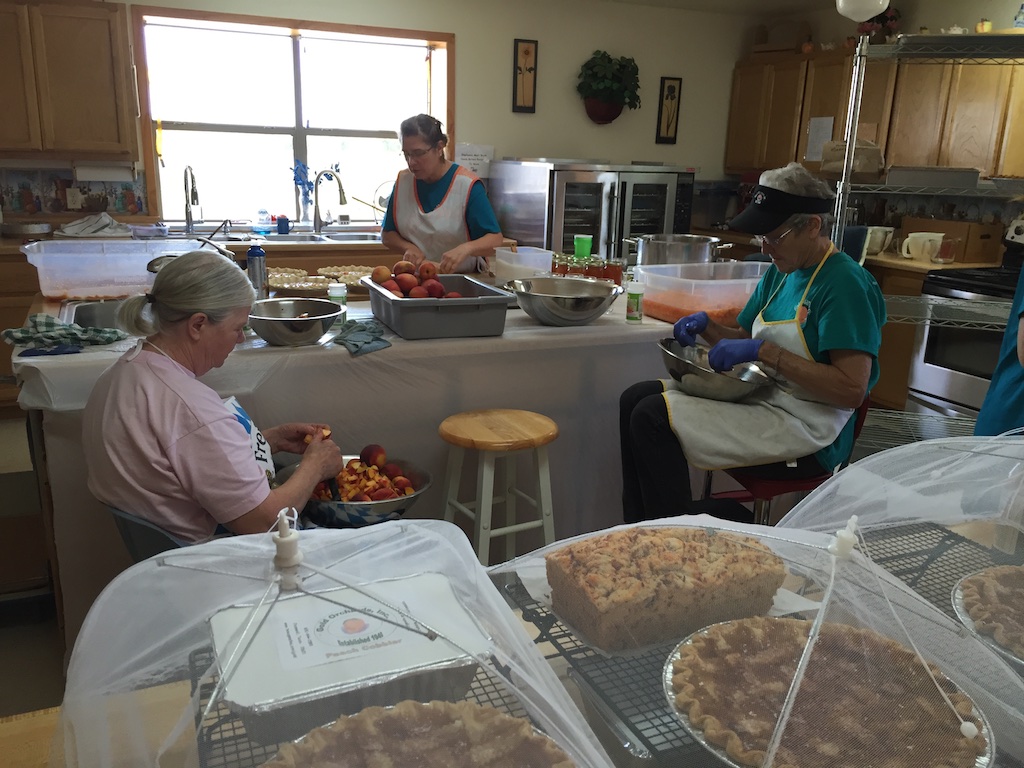 And here is where they bake pies and other delectables. It smelled wonderful inside. I was so tempted to buy a pie, but instead I bought fresh peaches and jam and...
And here is where they bake pies and other delectables. It smelled wonderful inside. I was so tempted to buy a pie, but instead I bought fresh peaches and jam and...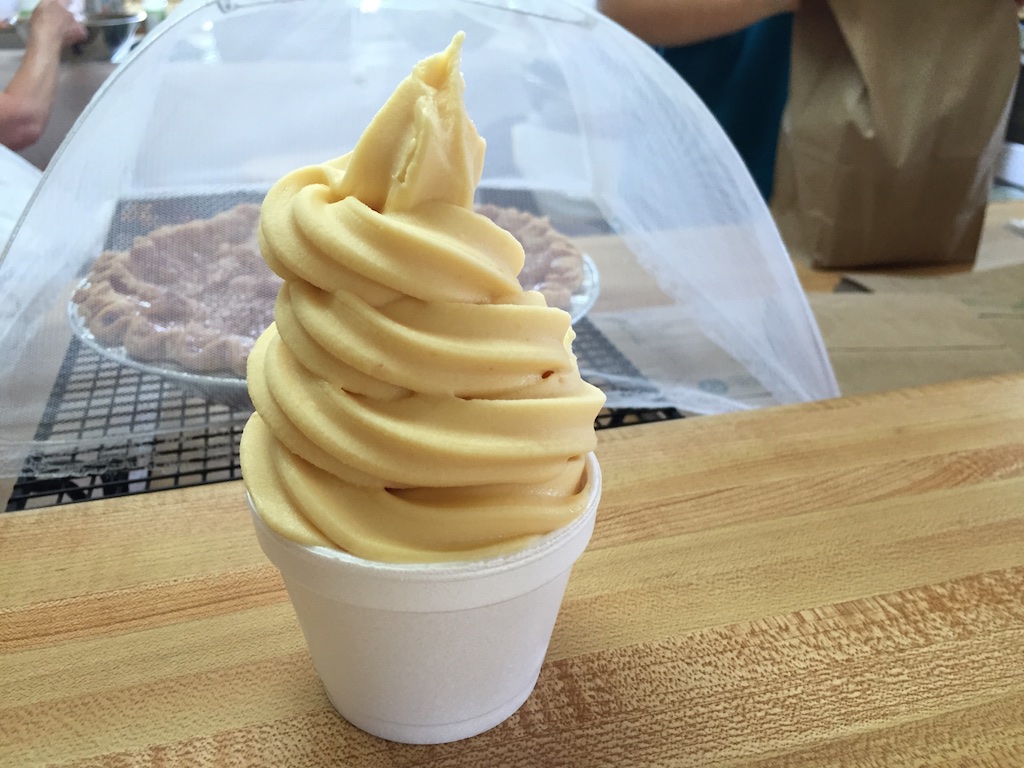 ...this for the road...trying to ease the sadness of leaving our family behind.
...this for the road...trying to ease the sadness of leaving our family behind.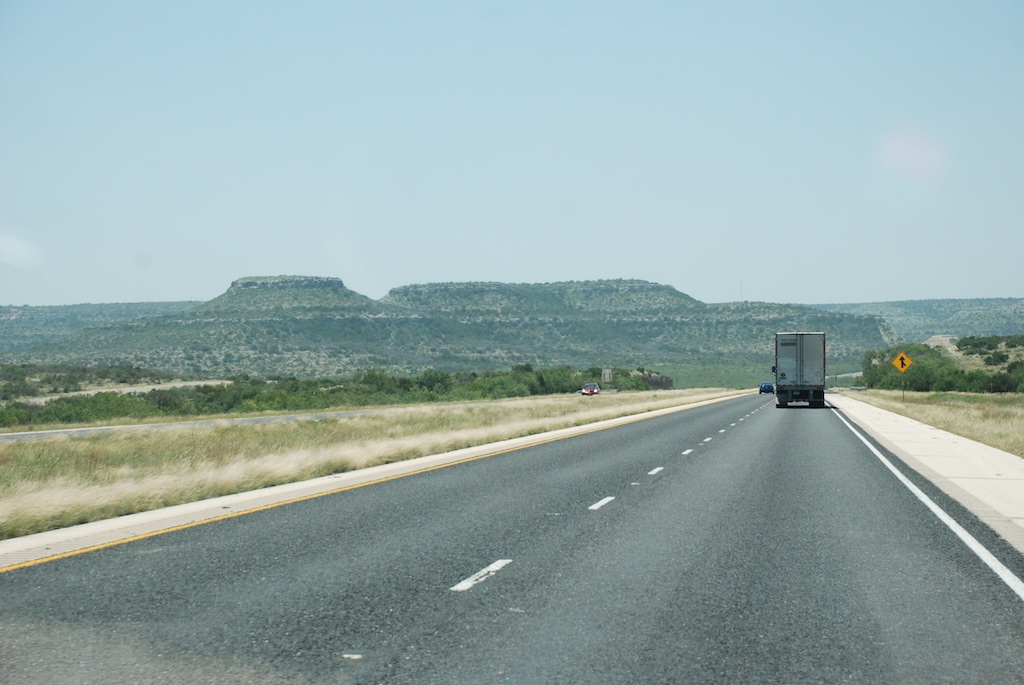 I amused myself by taking photos on the road (thinking that I would remember where they were taken). I have not cropped or edited these photos. They include the squashbugs (as my brother and I used to call them) and glare on the windshield.
I amused myself by taking photos on the road (thinking that I would remember where they were taken). I have not cropped or edited these photos. They include the squashbugs (as my brother and I used to call them) and glare on the windshield.
Texas is a big place. The country is not all what I had envisioned. 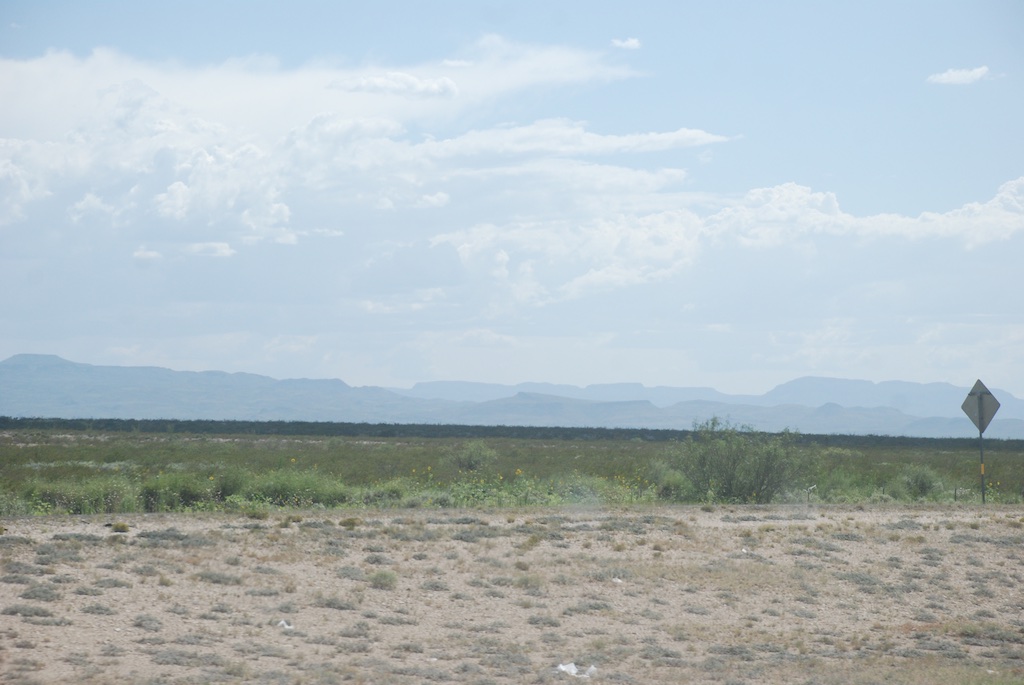 There are more mountains than I expected.
There are more mountains than I expected.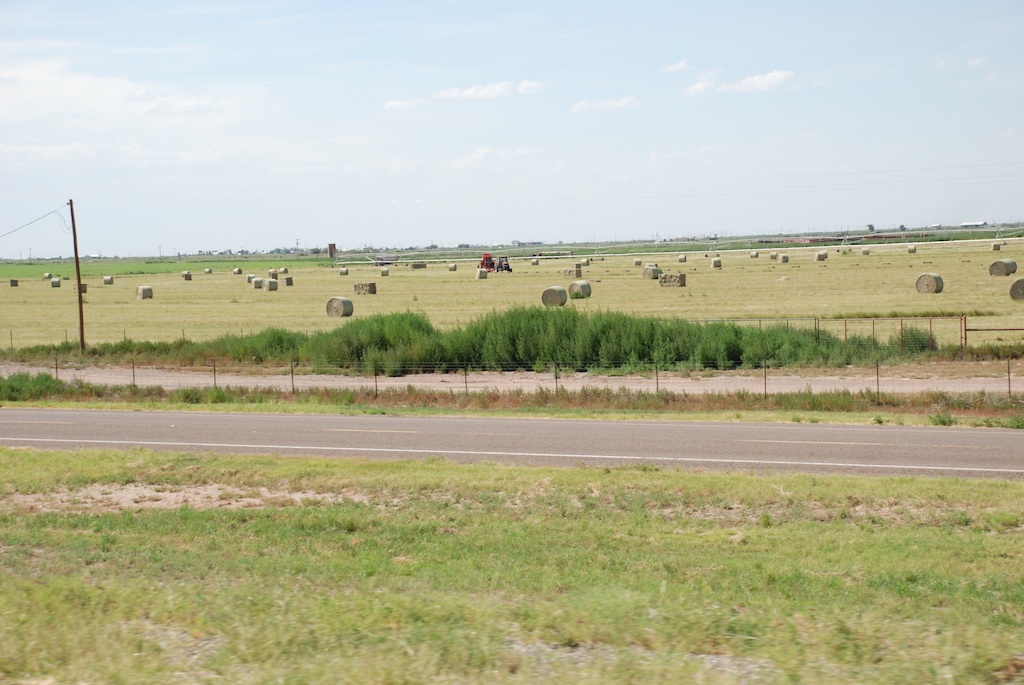 And more greenery. Even towards West Texas there is agriculture anywhere there is consistent water.
And more greenery. Even towards West Texas there is agriculture anywhere there is consistent water.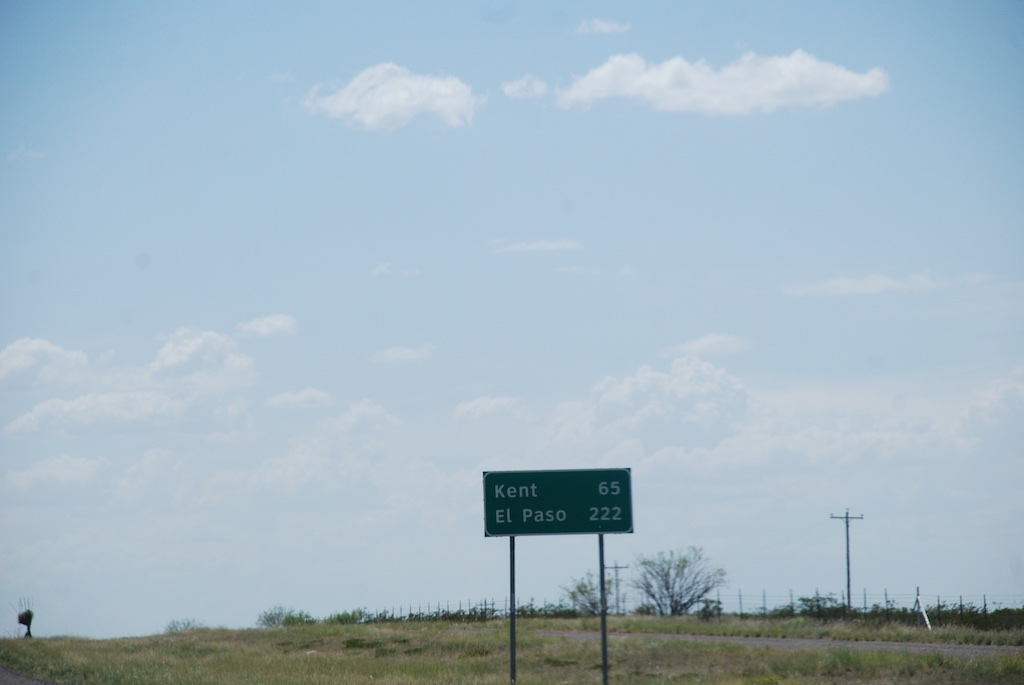
 At this gas stop I walked out back...
At this gas stop I walked out back...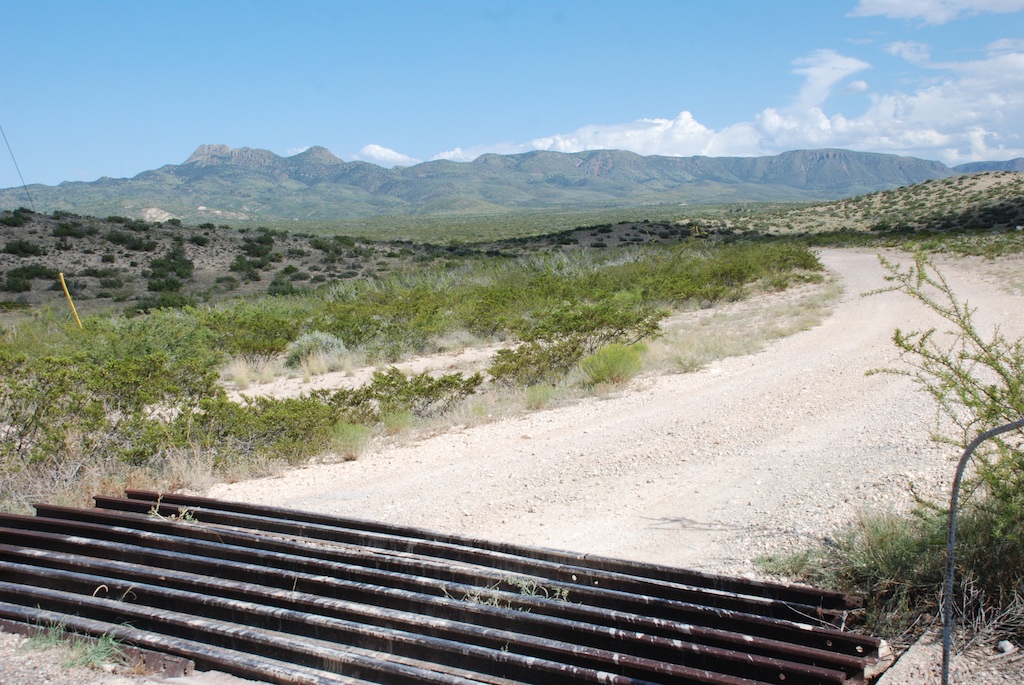 ...and took photos of the gorgeous Davis Mountains to the south.
...and took photos of the gorgeous Davis Mountains to the south.
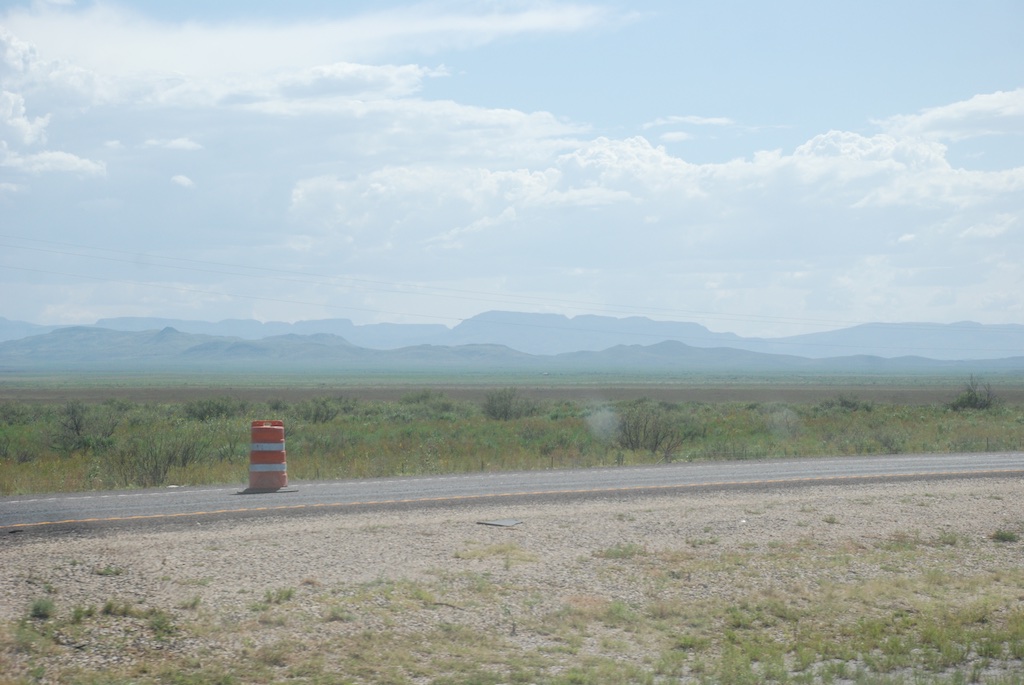
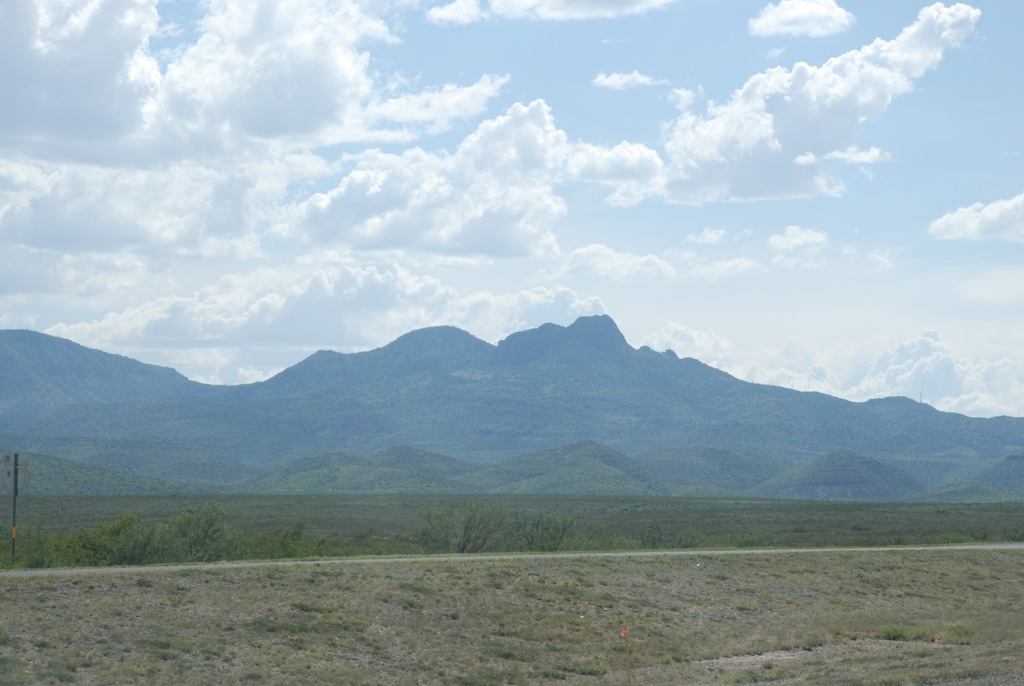
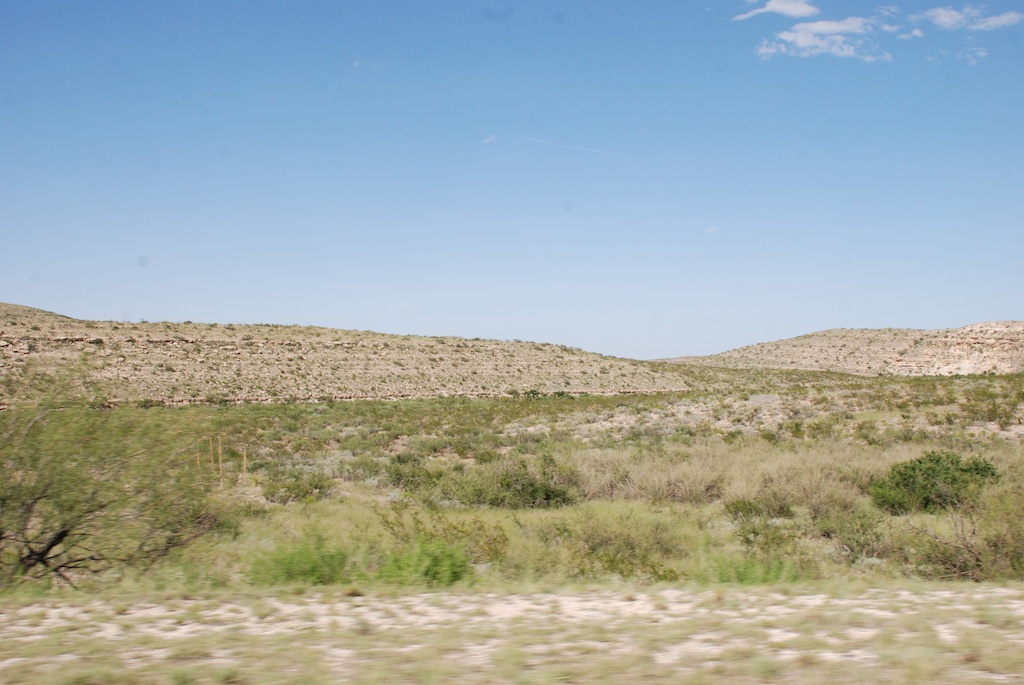
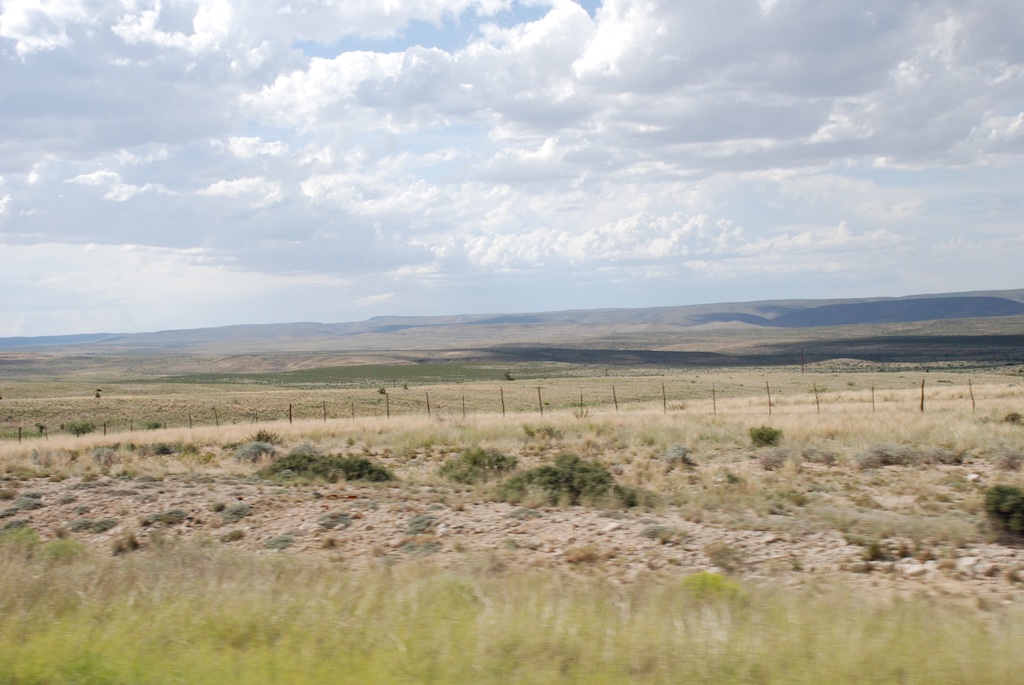 The simple descriptor I kept thinking was Big.
The simple descriptor I kept thinking was Big.
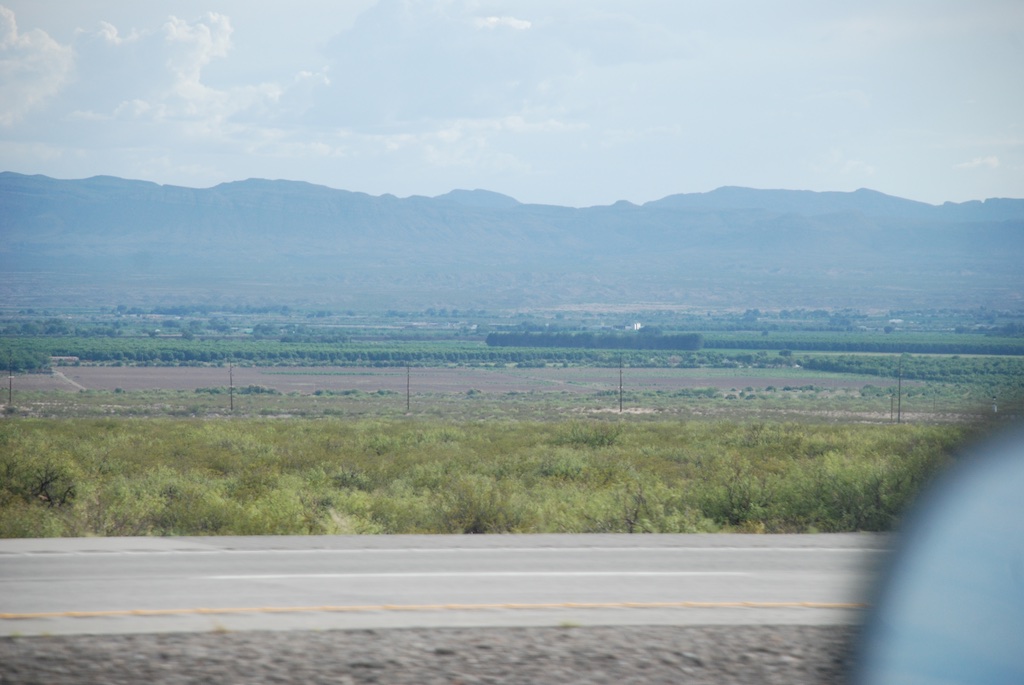 Dropping into the Rio Grande valley.
Dropping into the Rio Grande valley.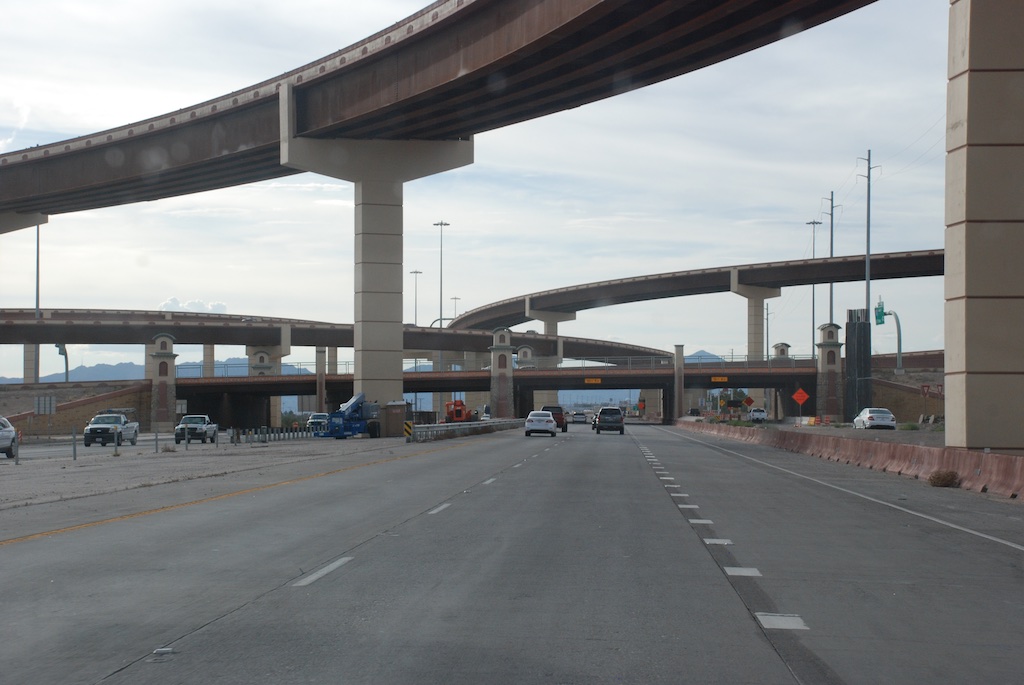 El Paso, on the U.S./Mexico border.
El Paso, on the U.S./Mexico border.
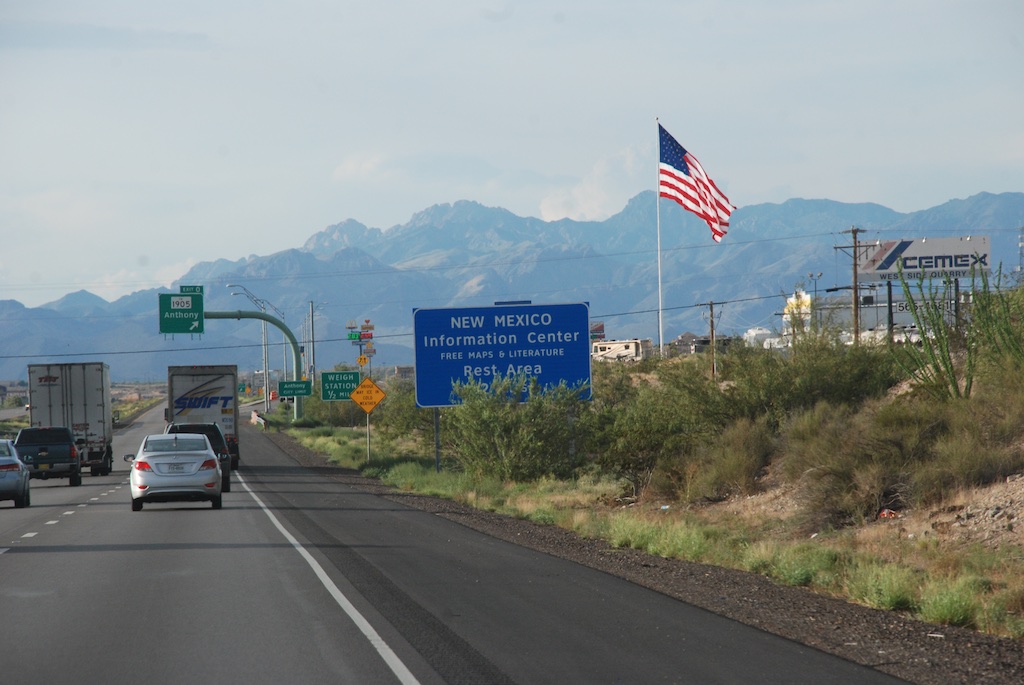 The end of this blog post but not the day. More in the next post.
The end of this blog post but not the day. More in the next post.

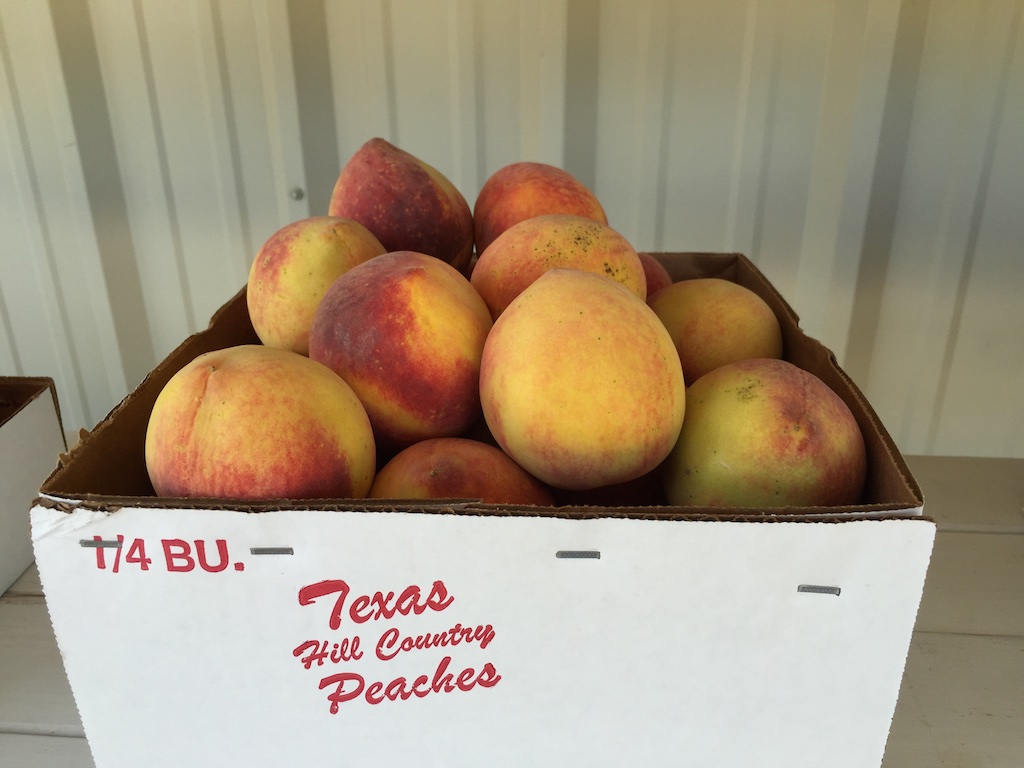
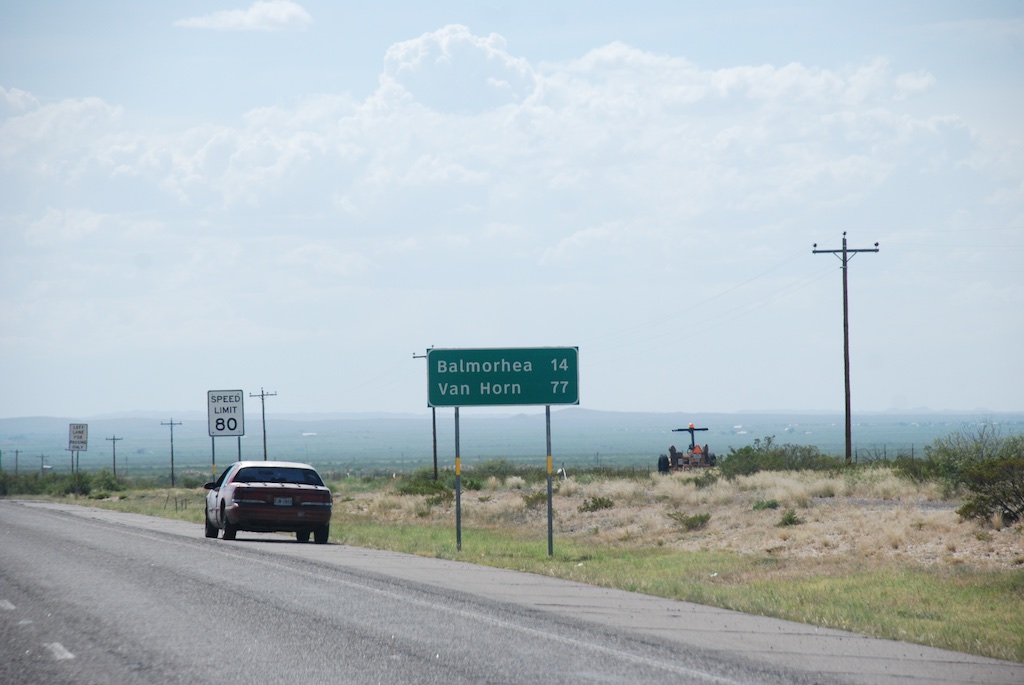

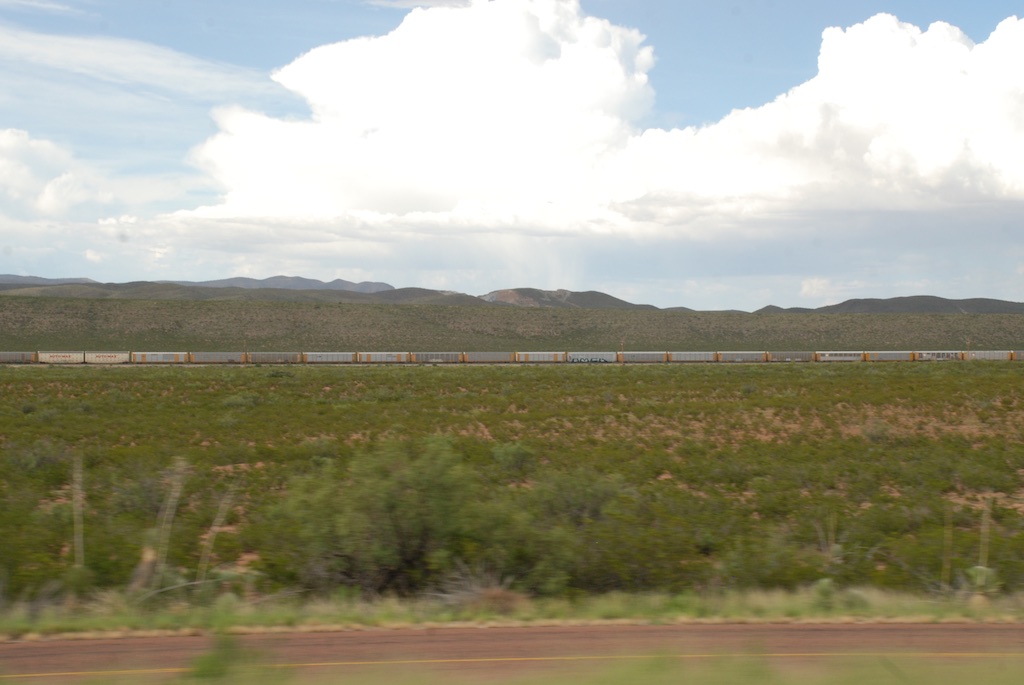
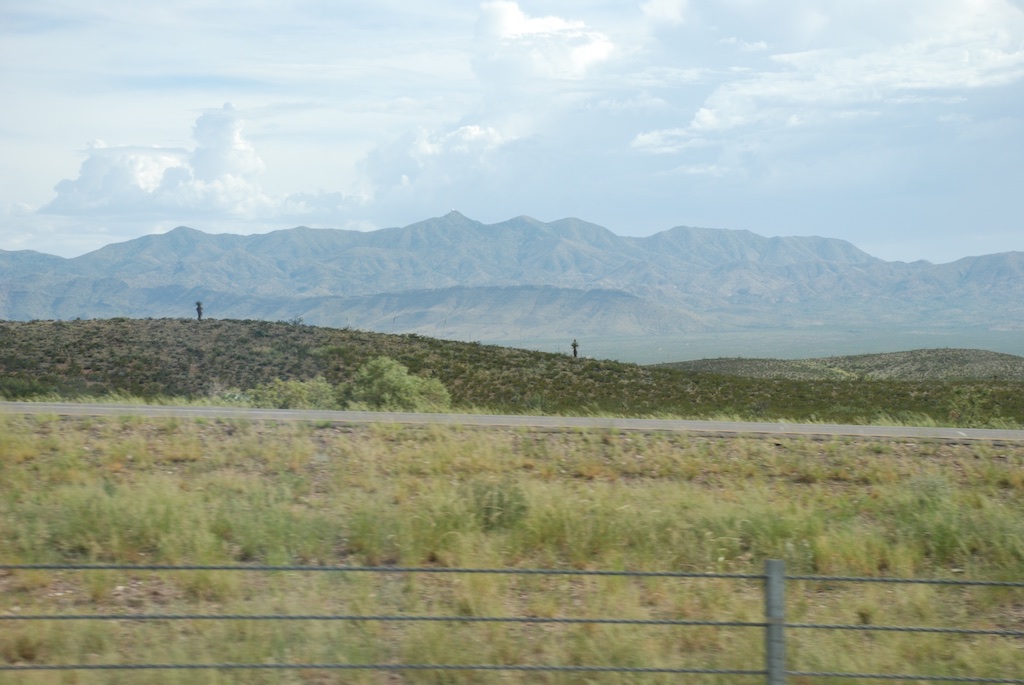
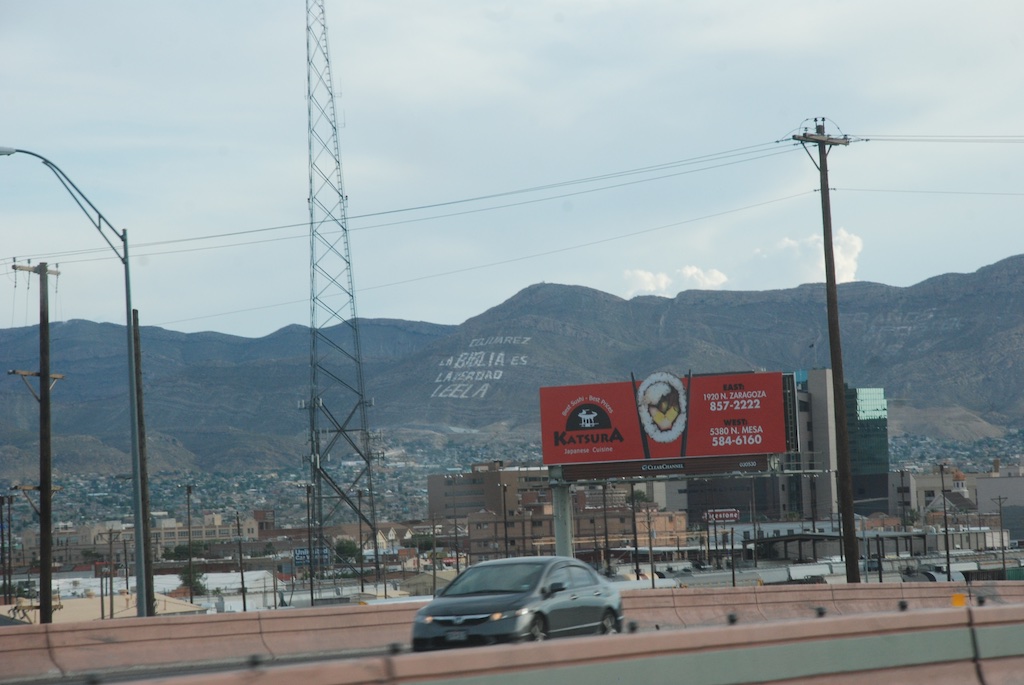
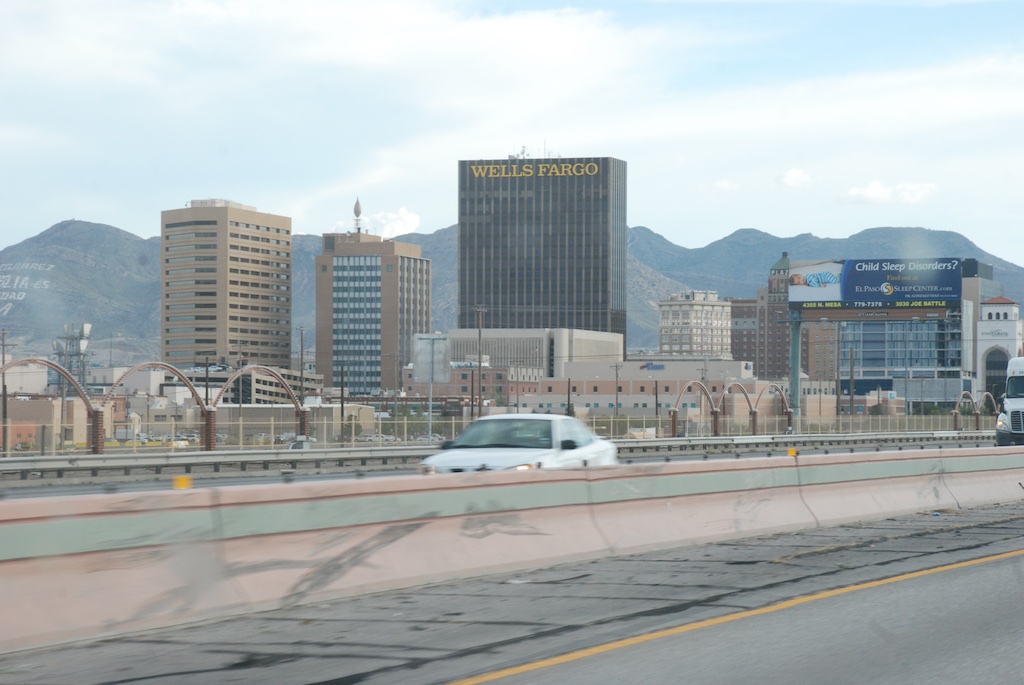
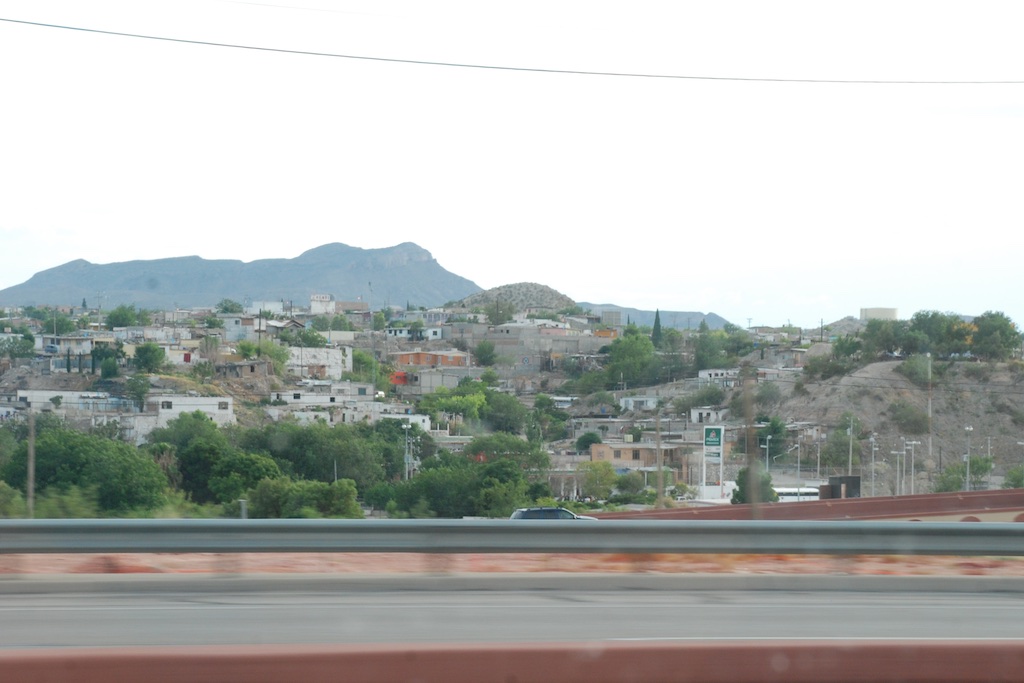
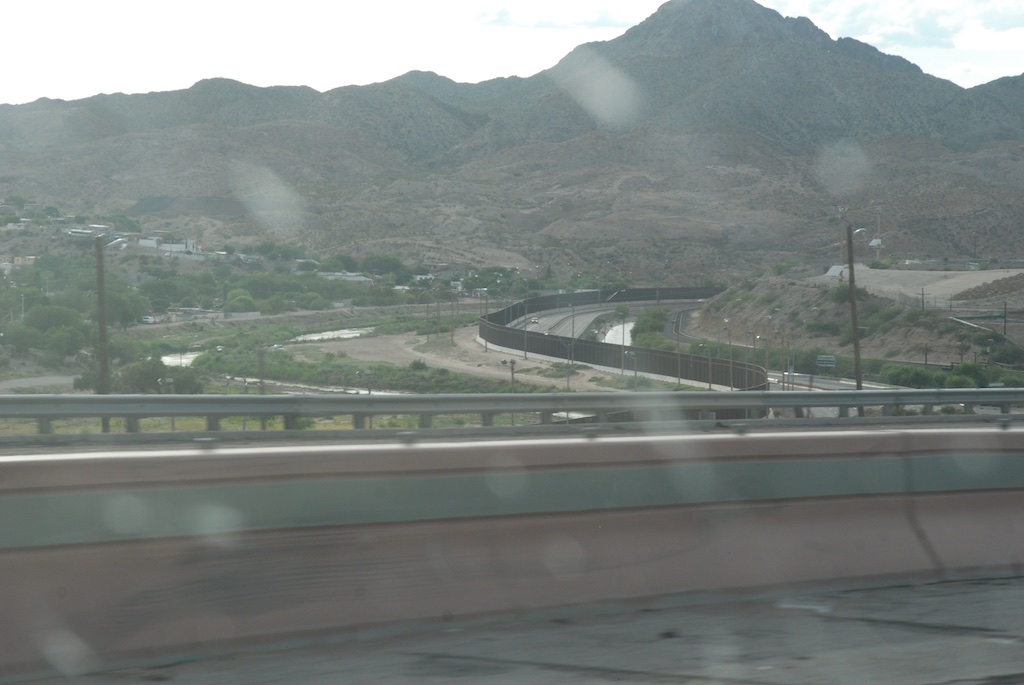
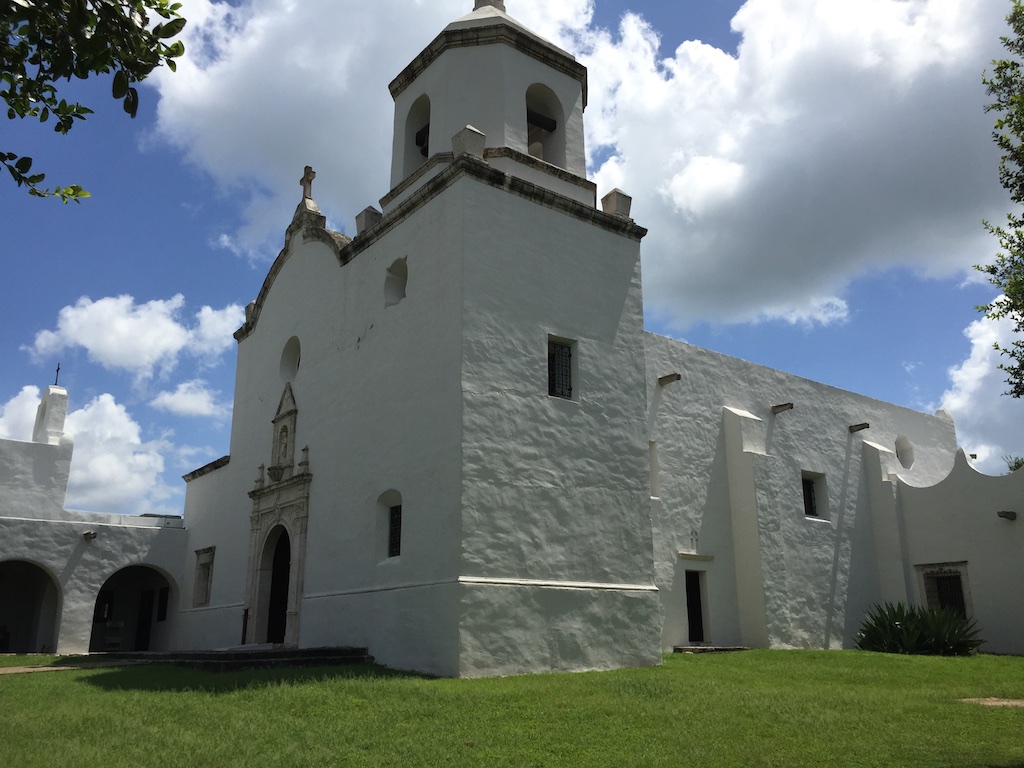
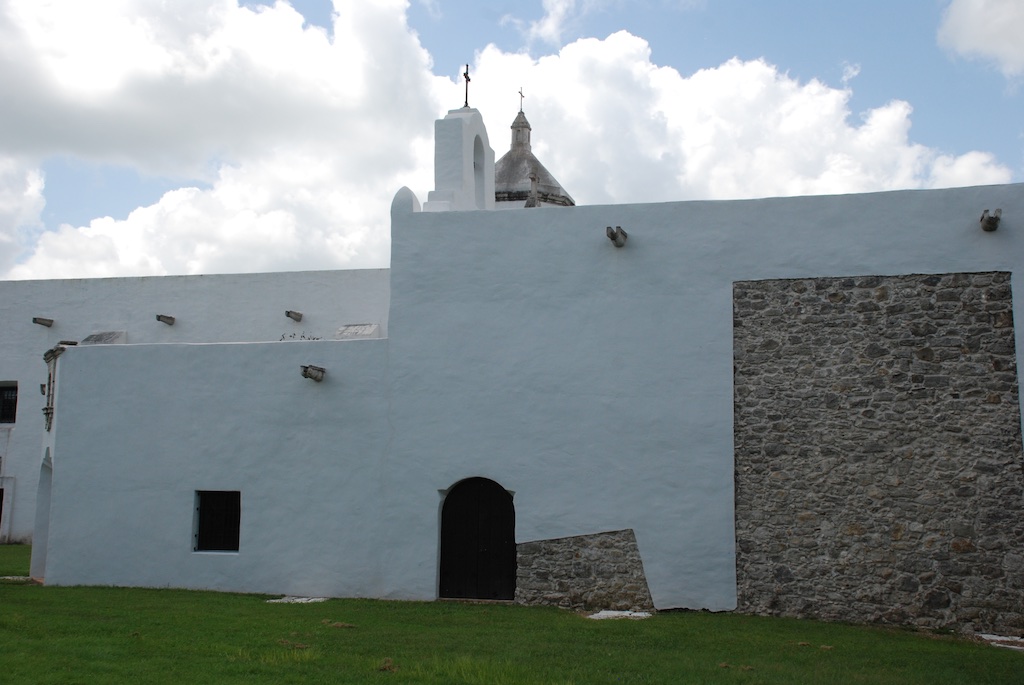
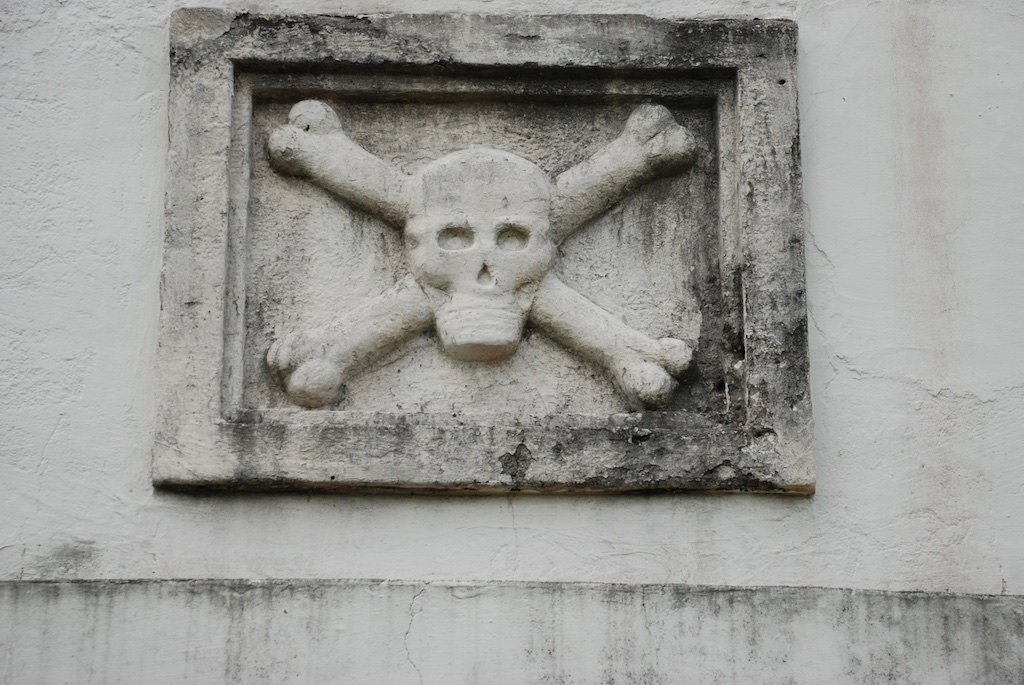 We entered the church through the Door of Life and left it through the Door of Death.
We entered the church through the Door of Life and left it through the Door of Death.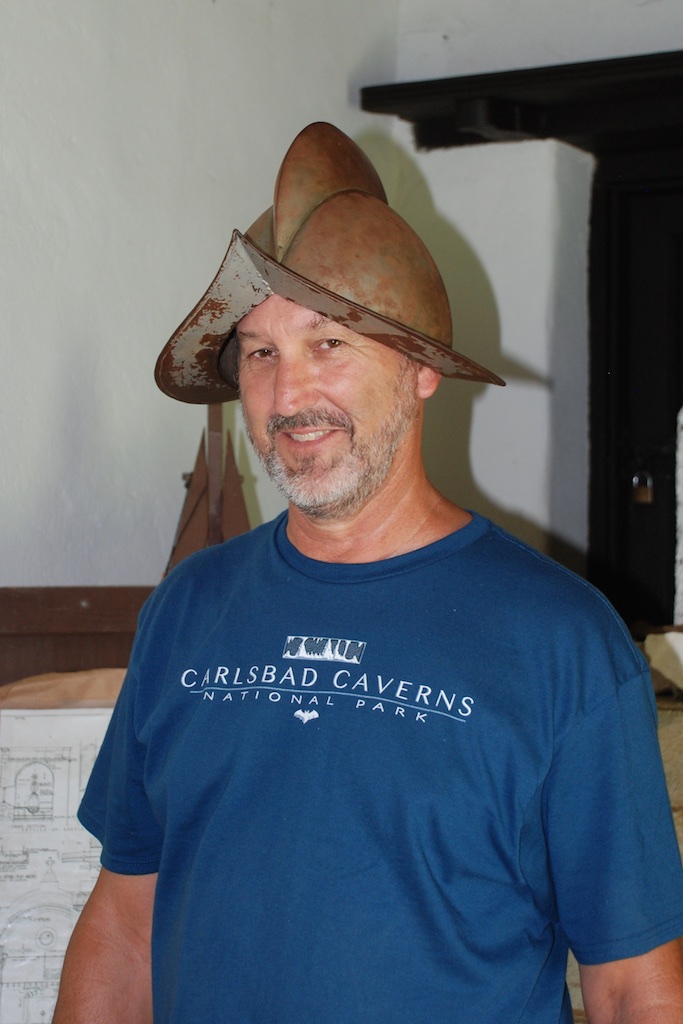

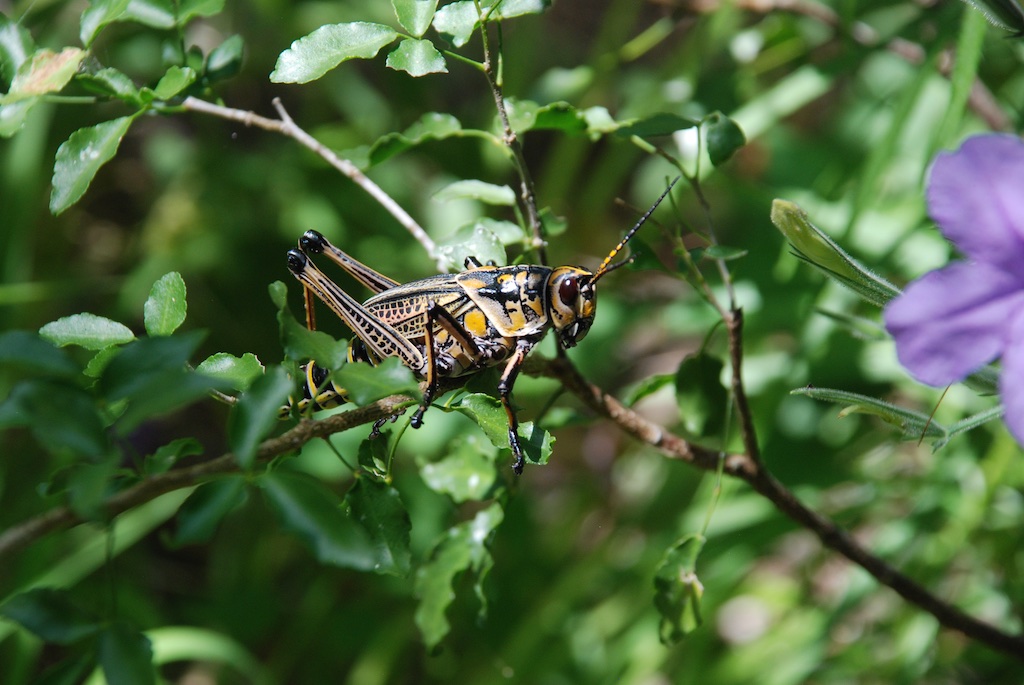
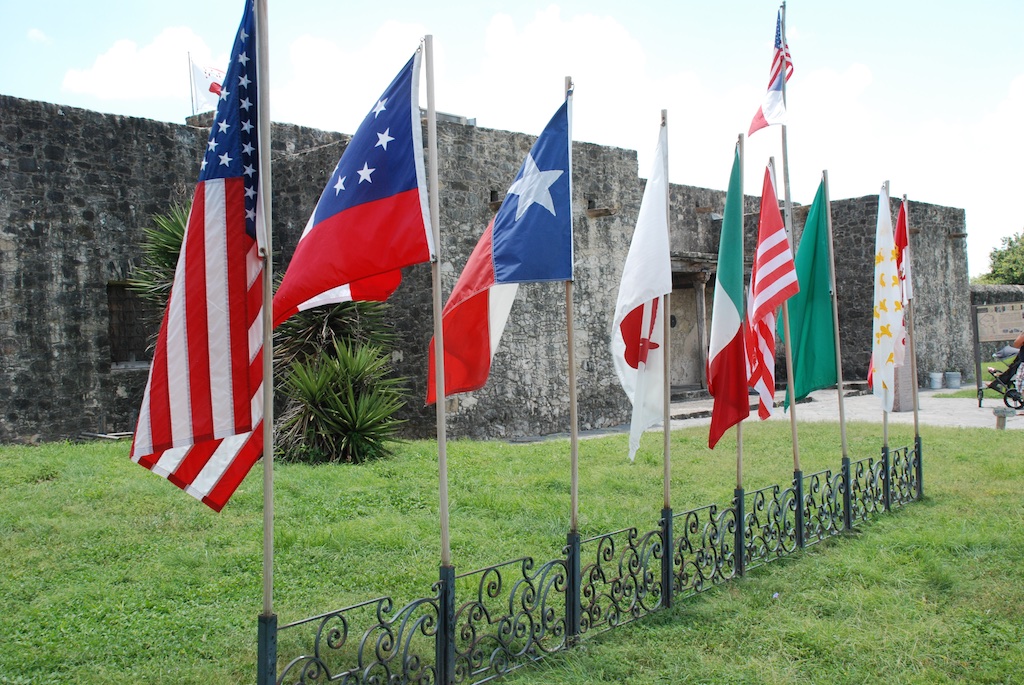
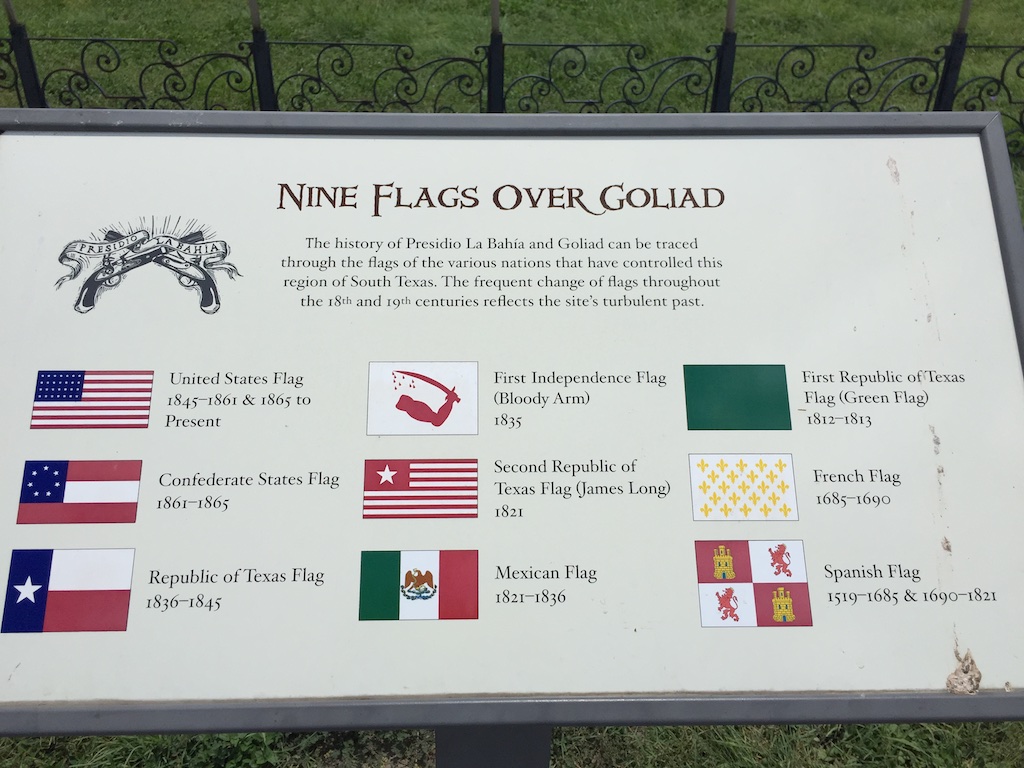
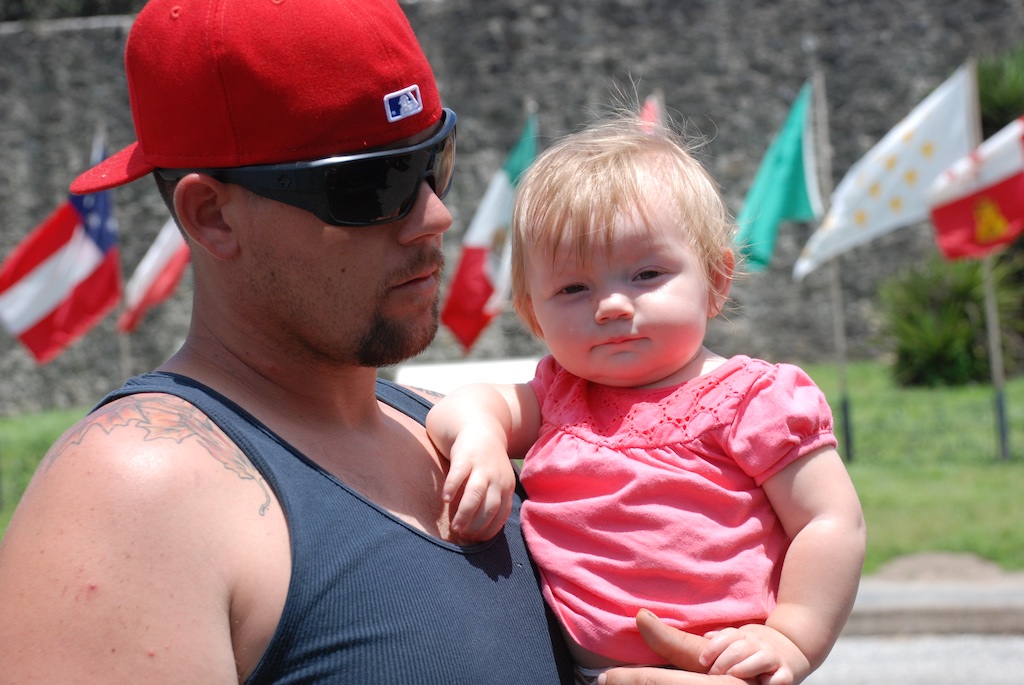
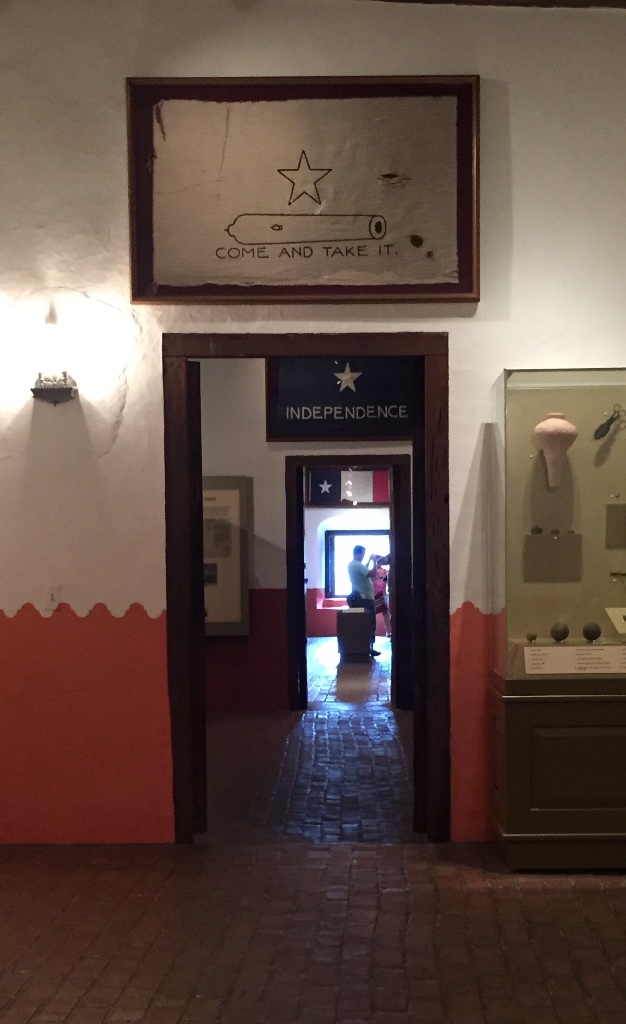
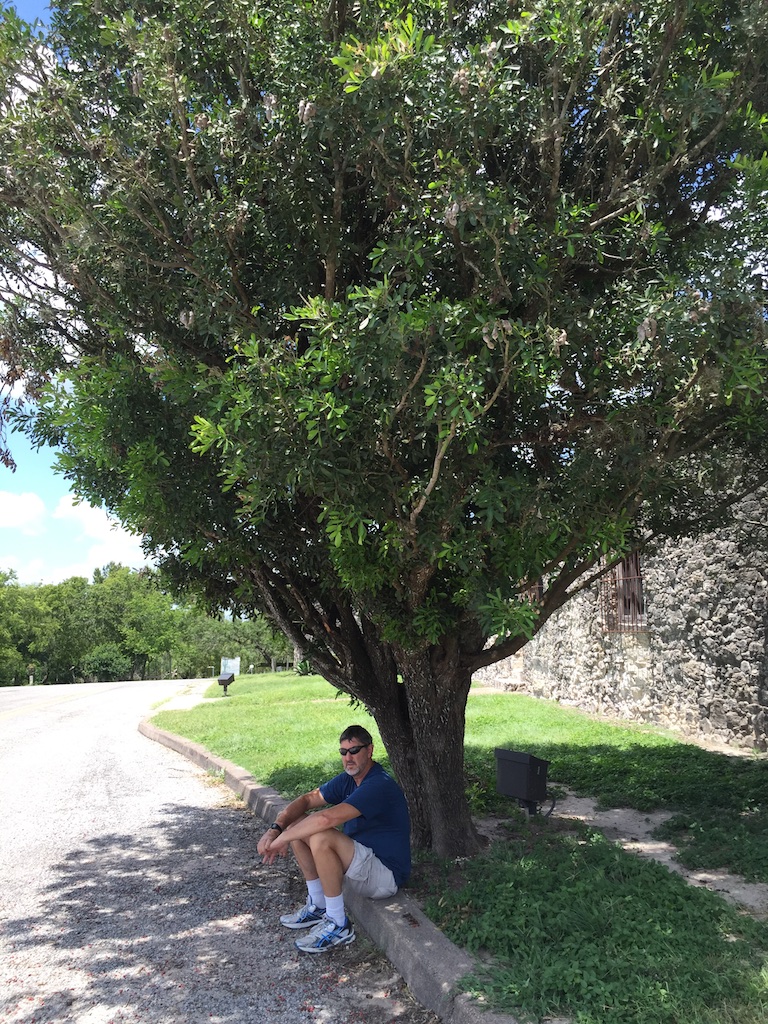
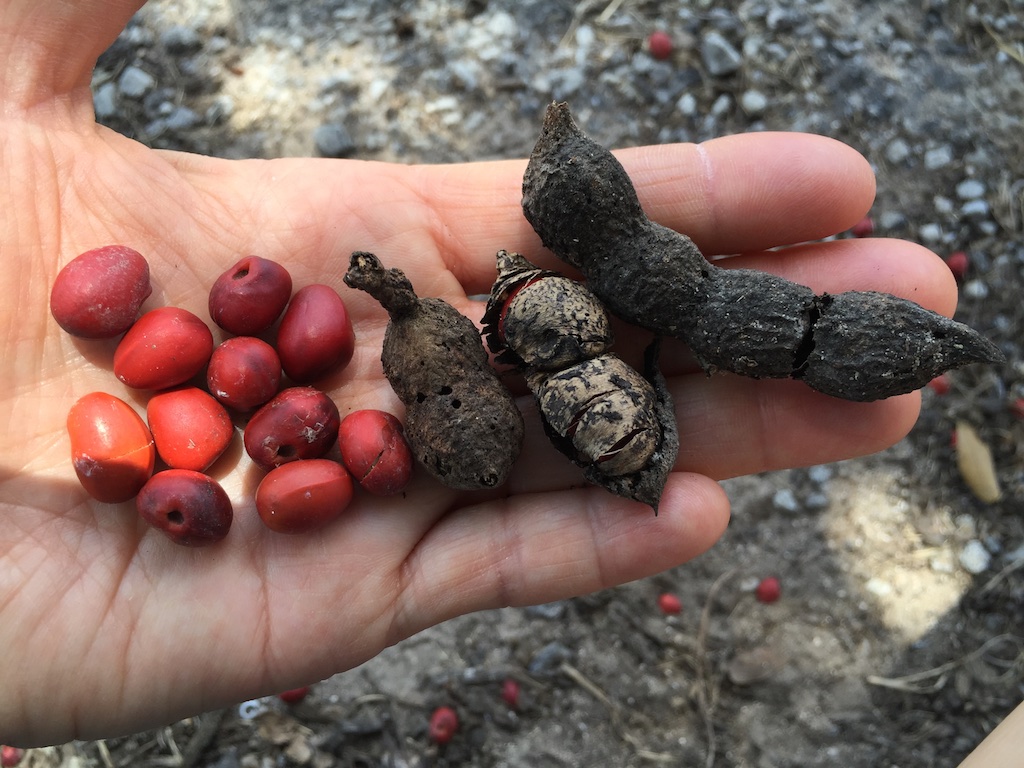
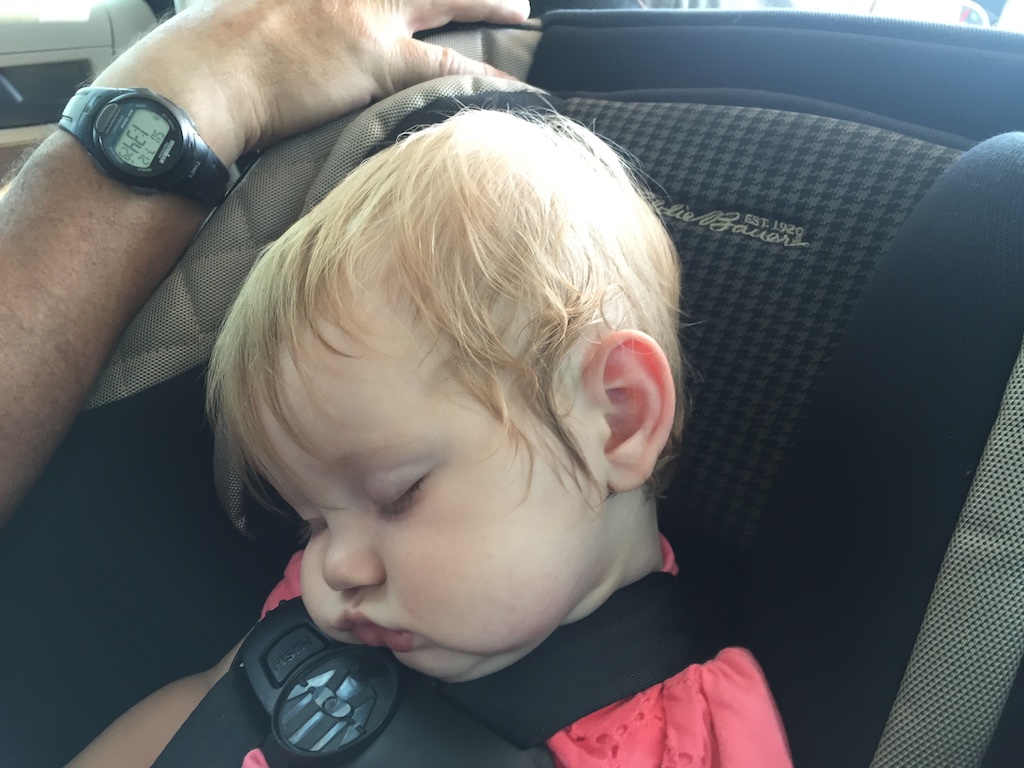
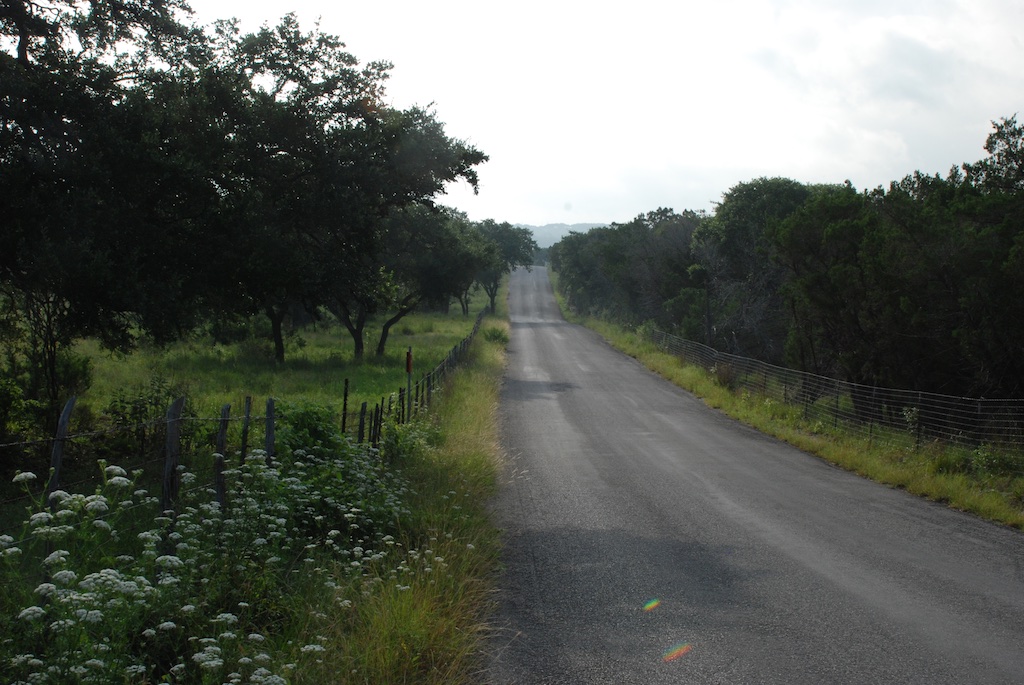 Just as we had seen in northern Arizona and New Mexico everything was green. Summer monsoons are the norm, but there have been several dry years so this particularly wet year is a welcome change. However there can be too much of a good thing. We saw the signs on the Blanco River of the recent high water and were amazed at just how high it was.
Just as we had seen in northern Arizona and New Mexico everything was green. Summer monsoons are the norm, but there have been several dry years so this particularly wet year is a welcome change. However there can be too much of a good thing. We saw the signs on the Blanco River of the recent high water and were amazed at just how high it was. 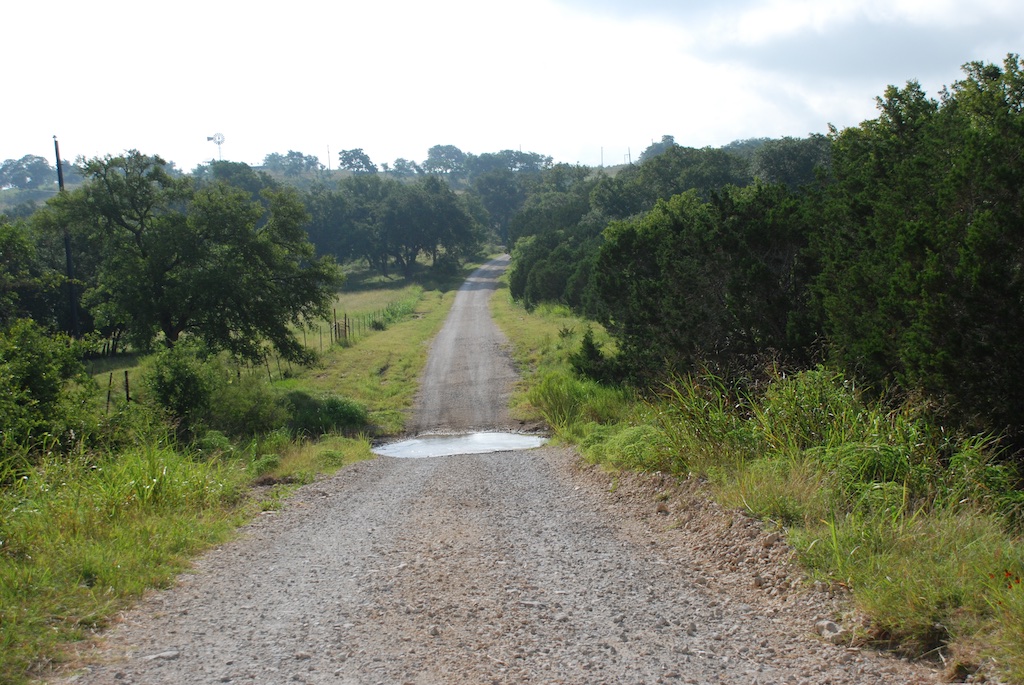 Katie and Kurtis live on high ground between Blanco and Wimberly (where the horrific May flooding swept houses and people away) so they were in no danger. This wash just down from their driveway has running water now but during the flooding was many feet higher and impassable. Hard to imagine.
Katie and Kurtis live on high ground between Blanco and Wimberly (where the horrific May flooding swept houses and people away) so they were in no danger. This wash just down from their driveway has running water now but during the flooding was many feet higher and impassable. Hard to imagine.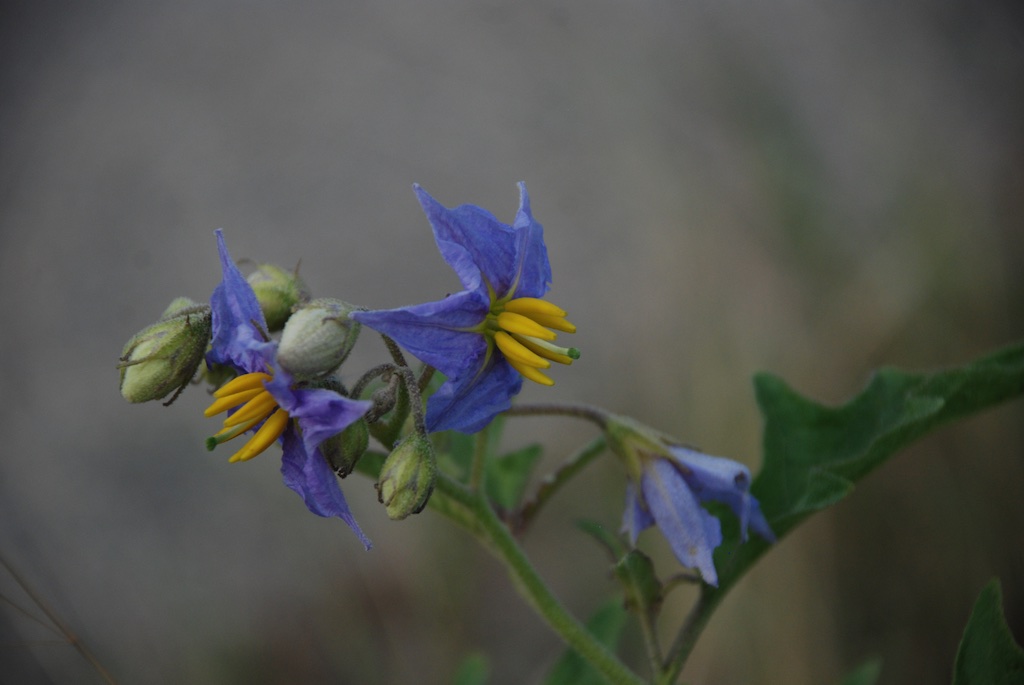
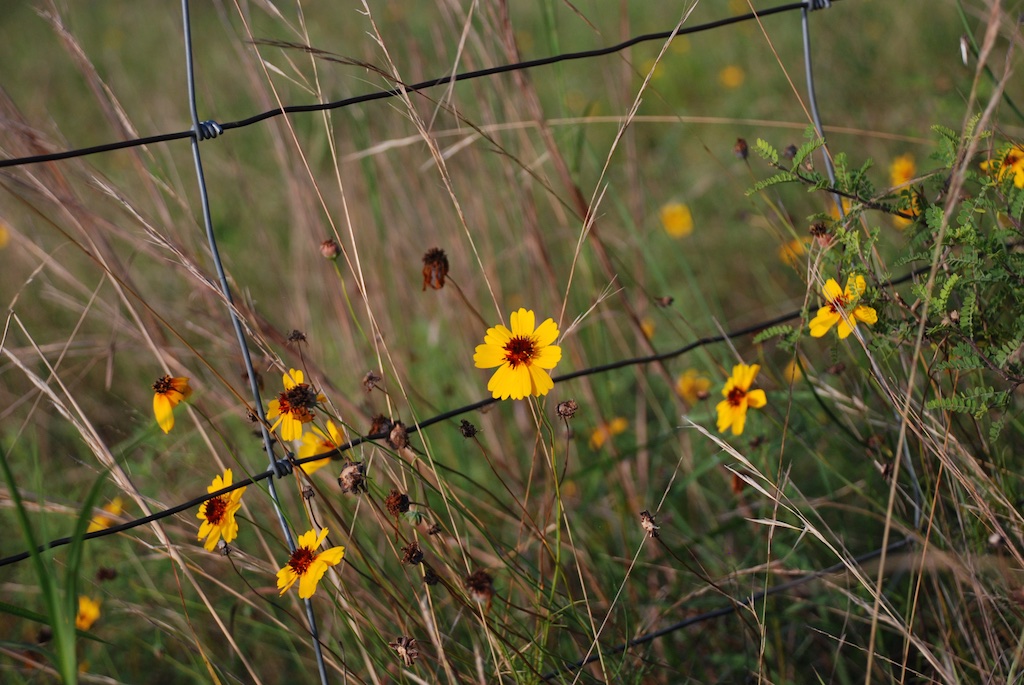
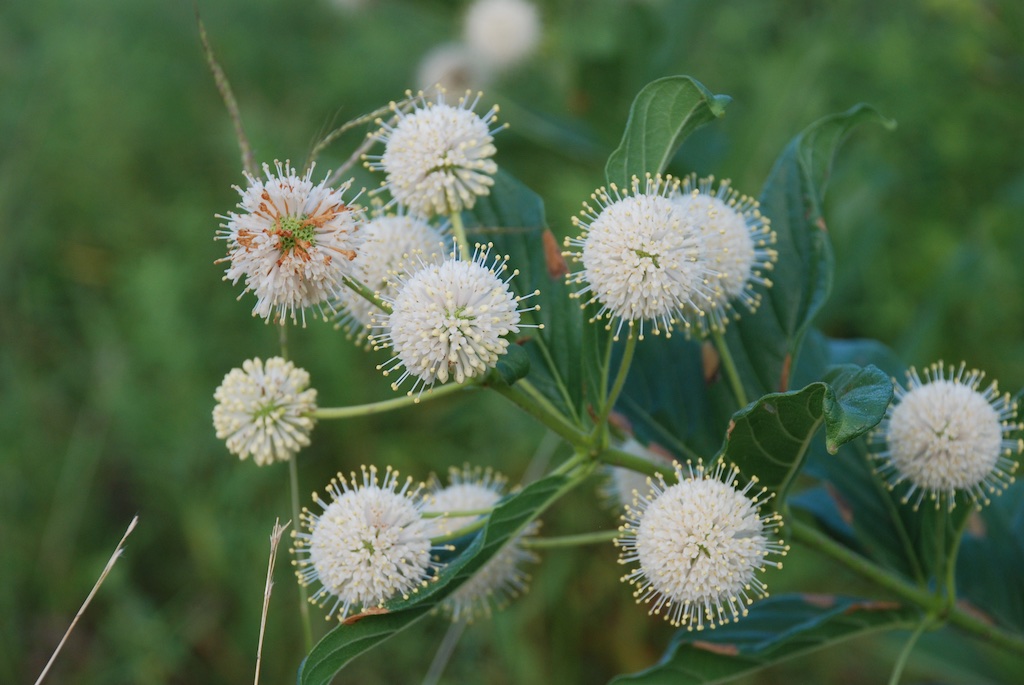
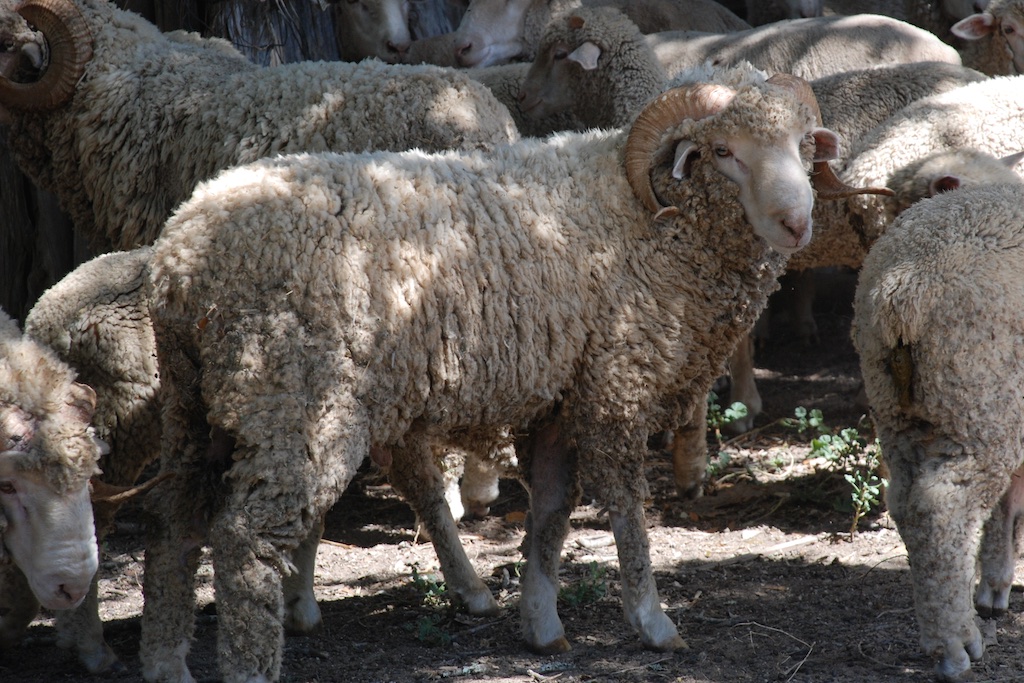 ...the rams...
...the rams...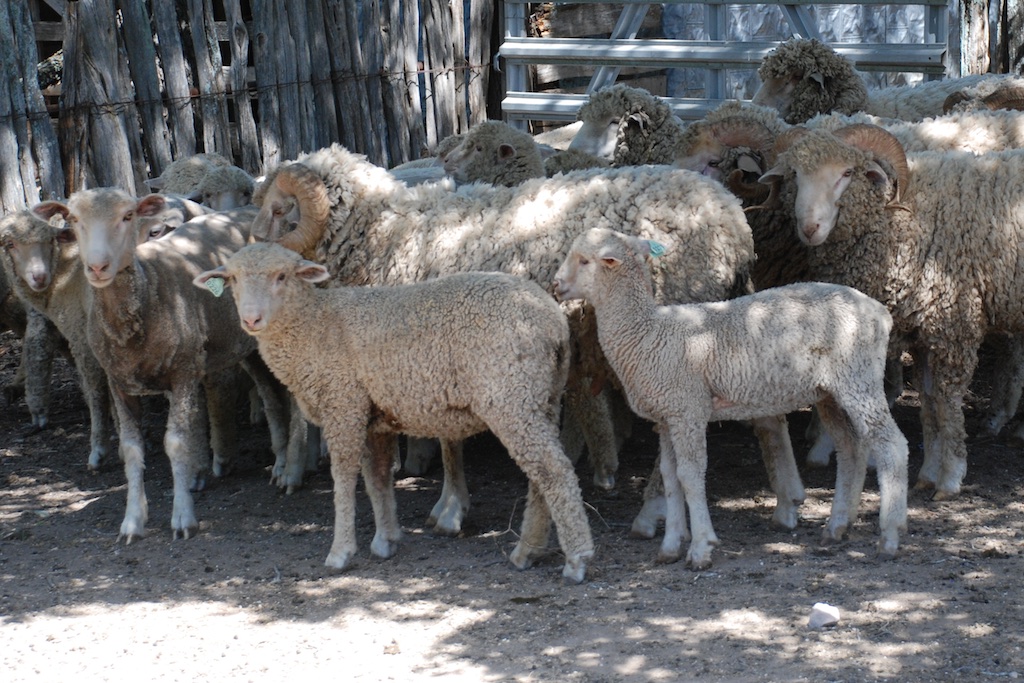
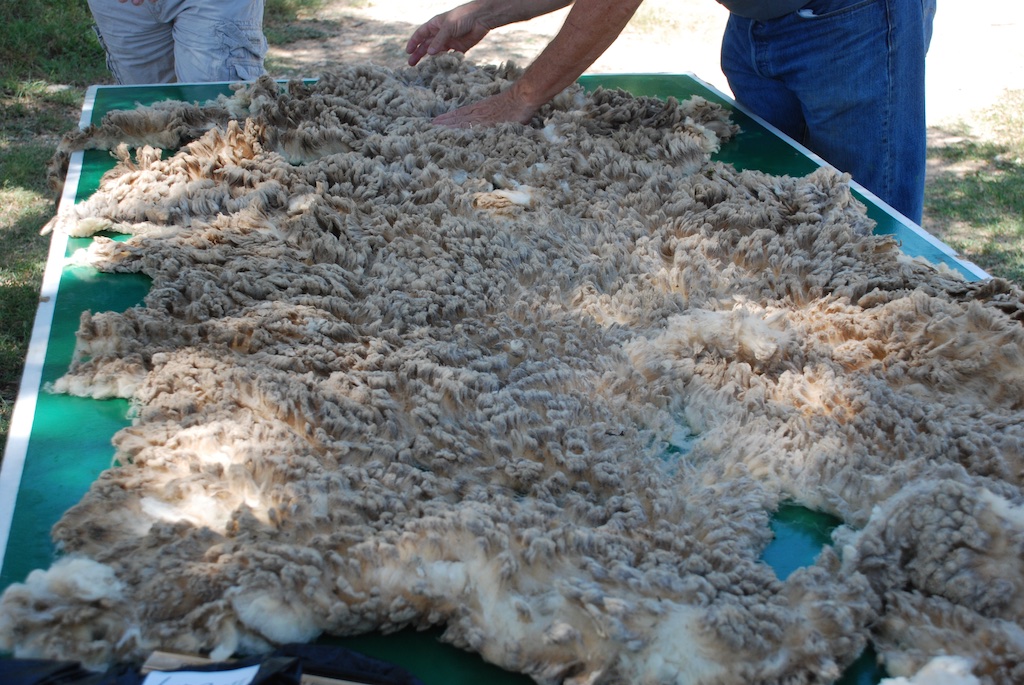
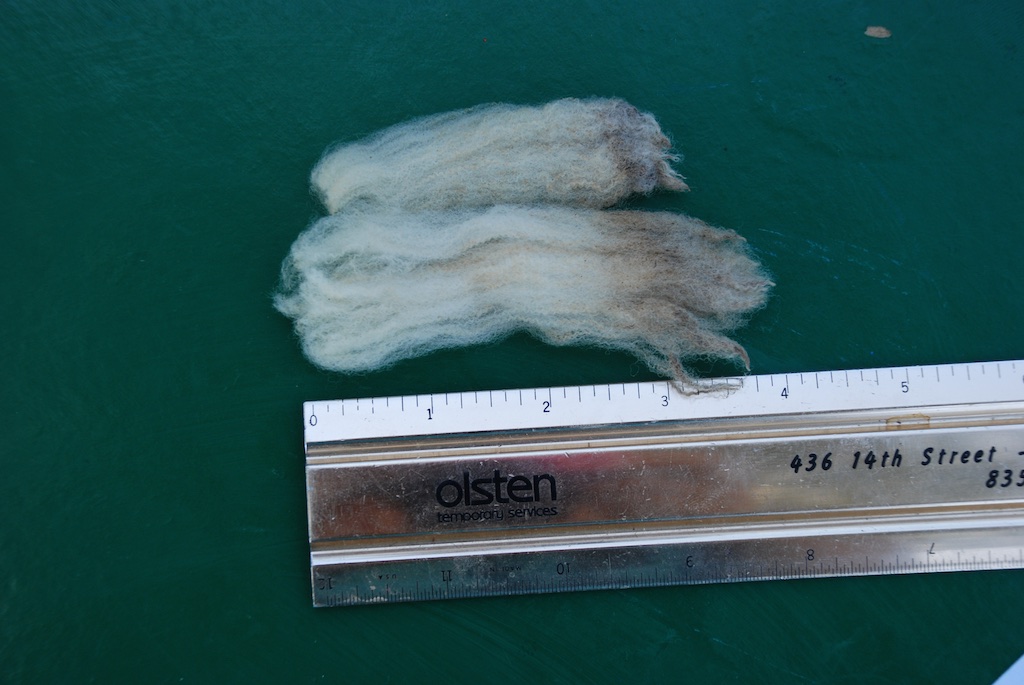
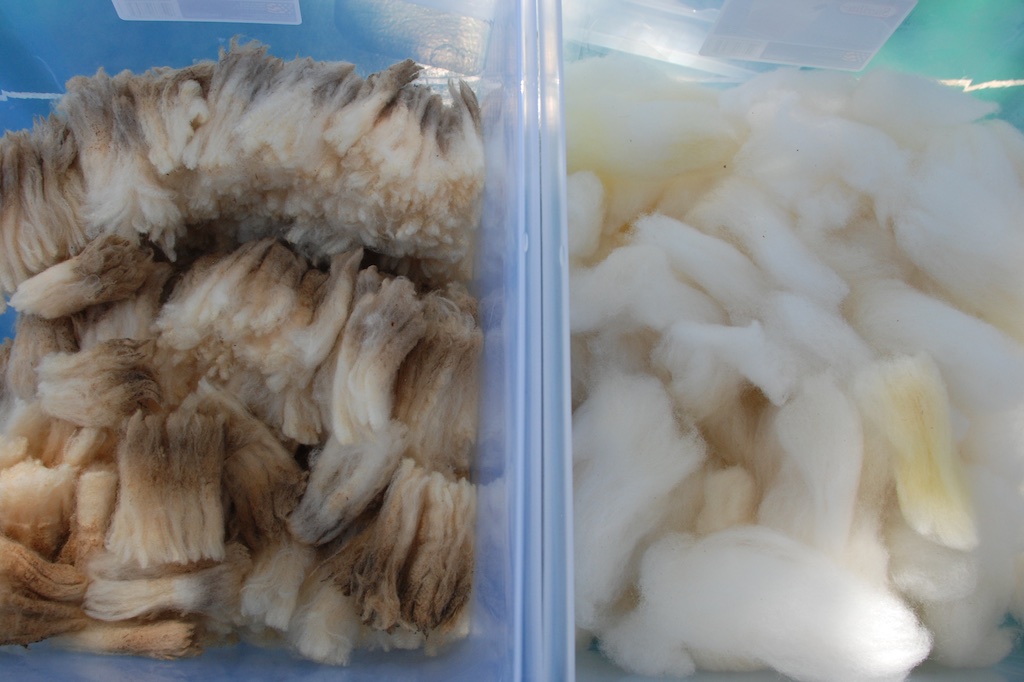
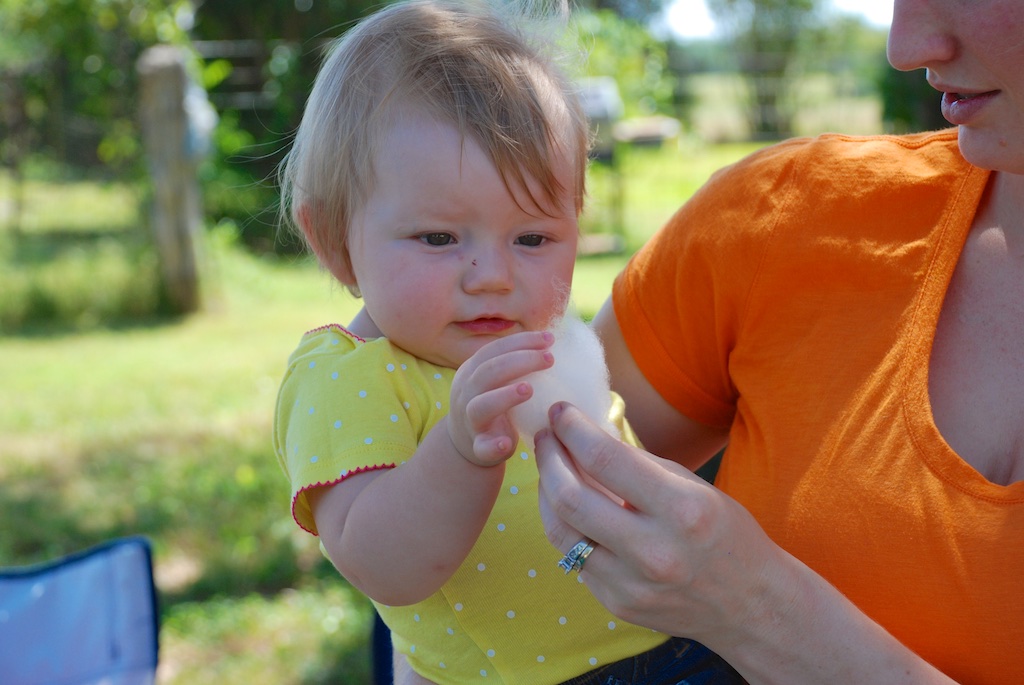
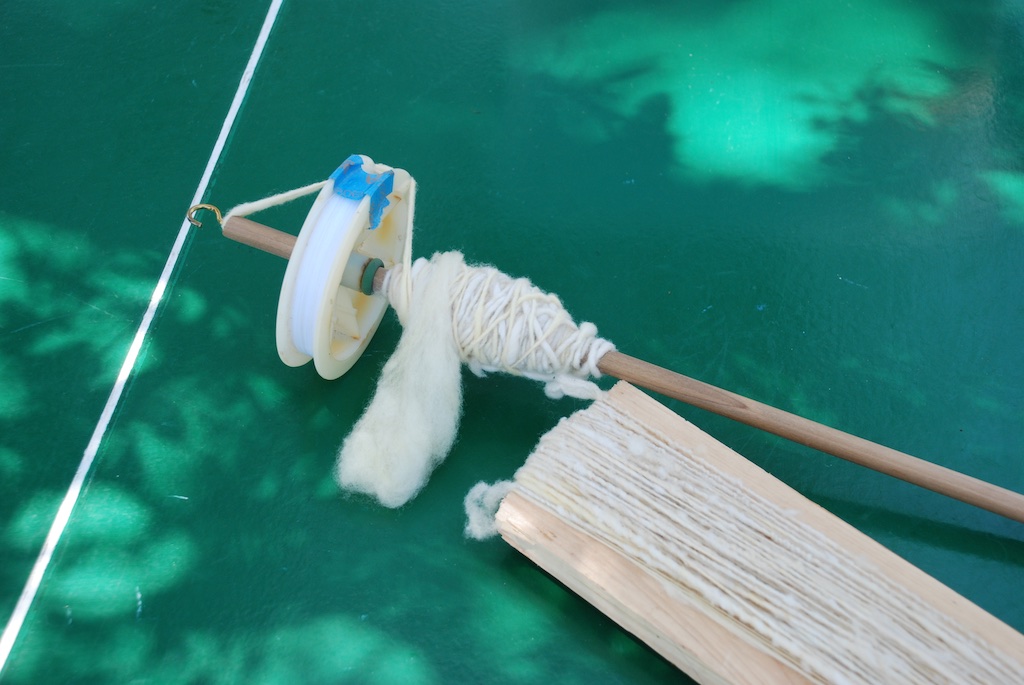
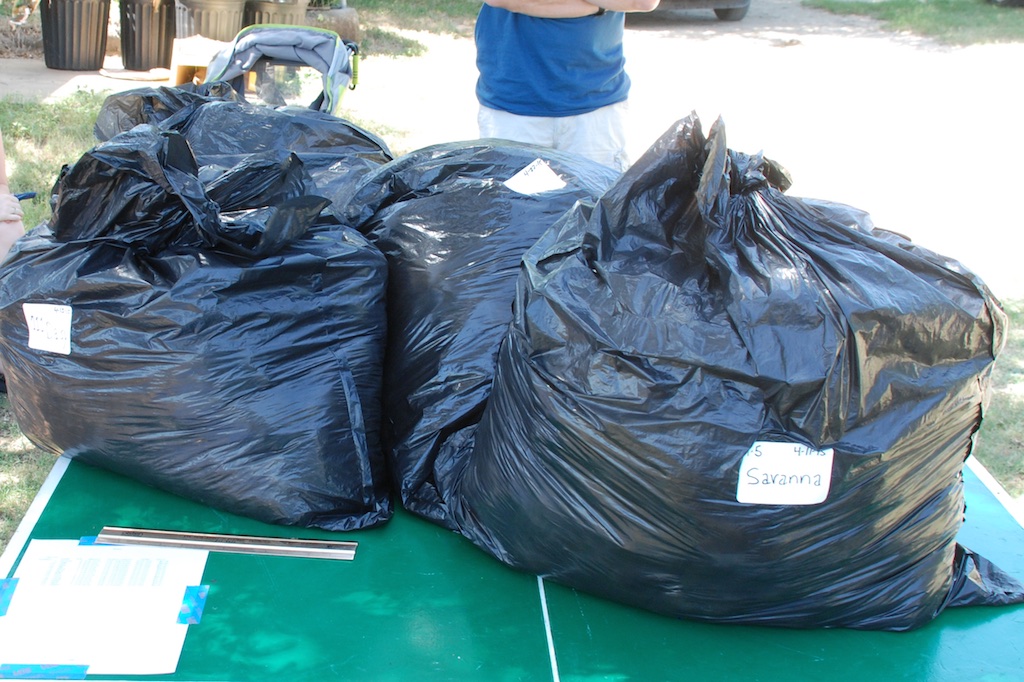
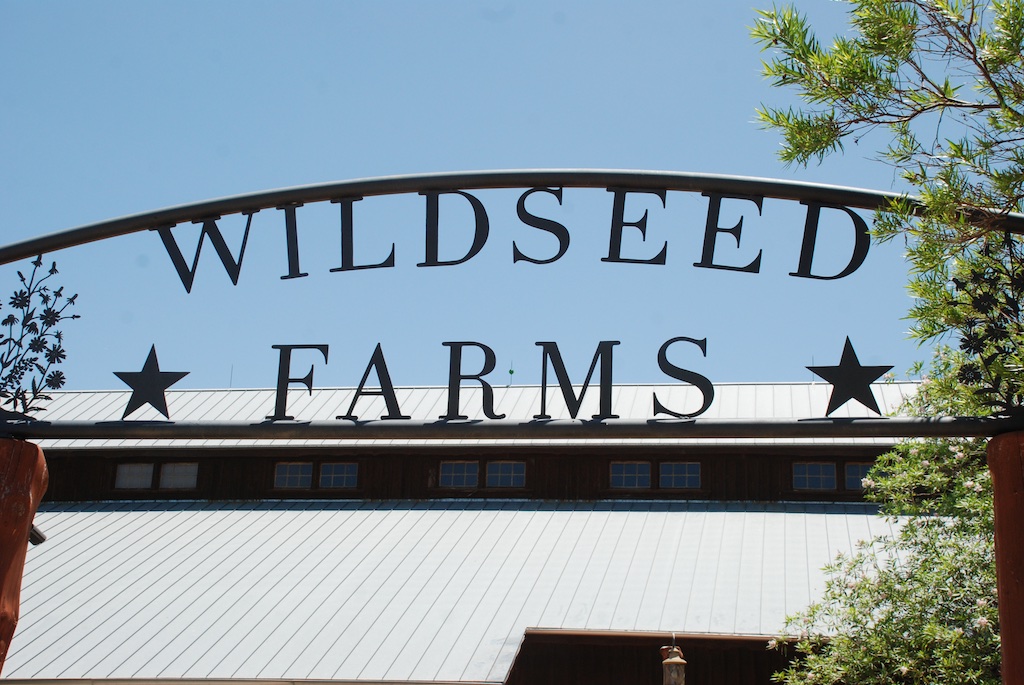
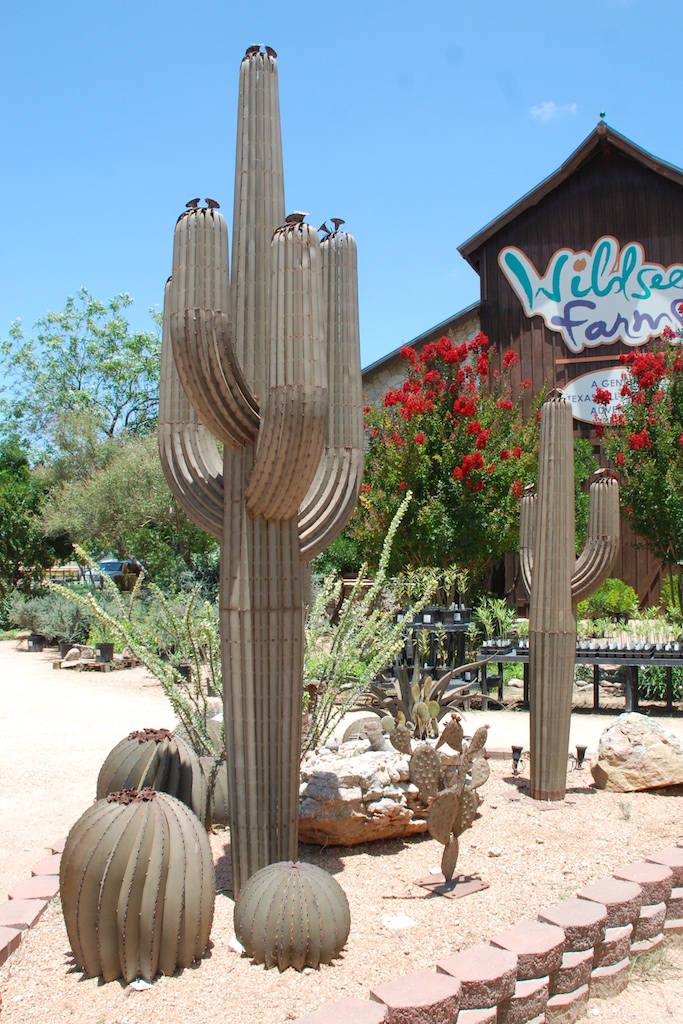

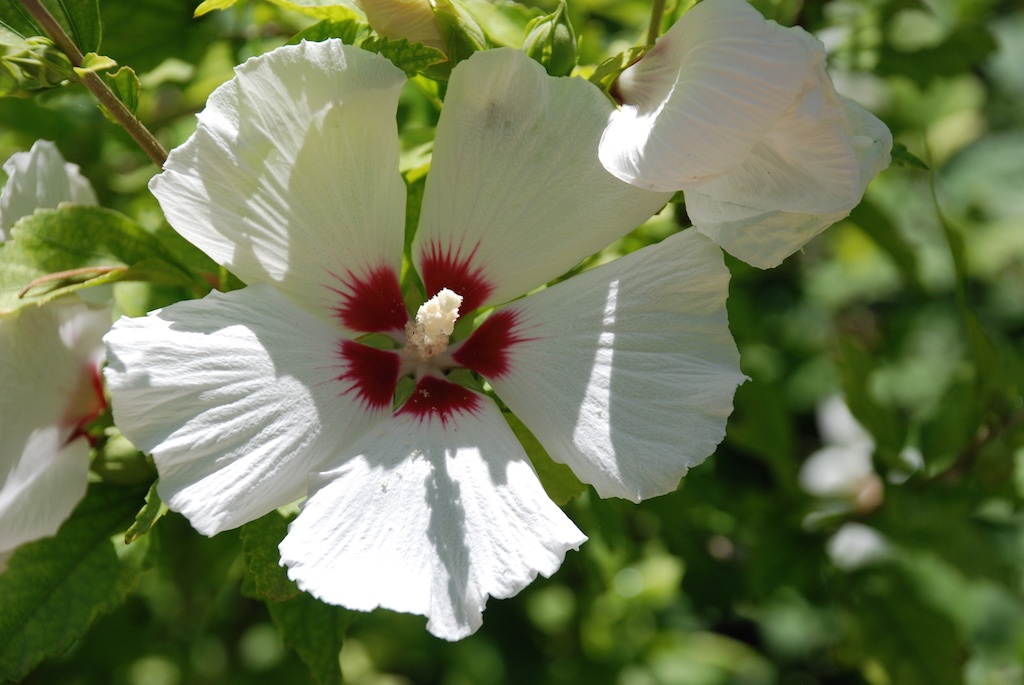
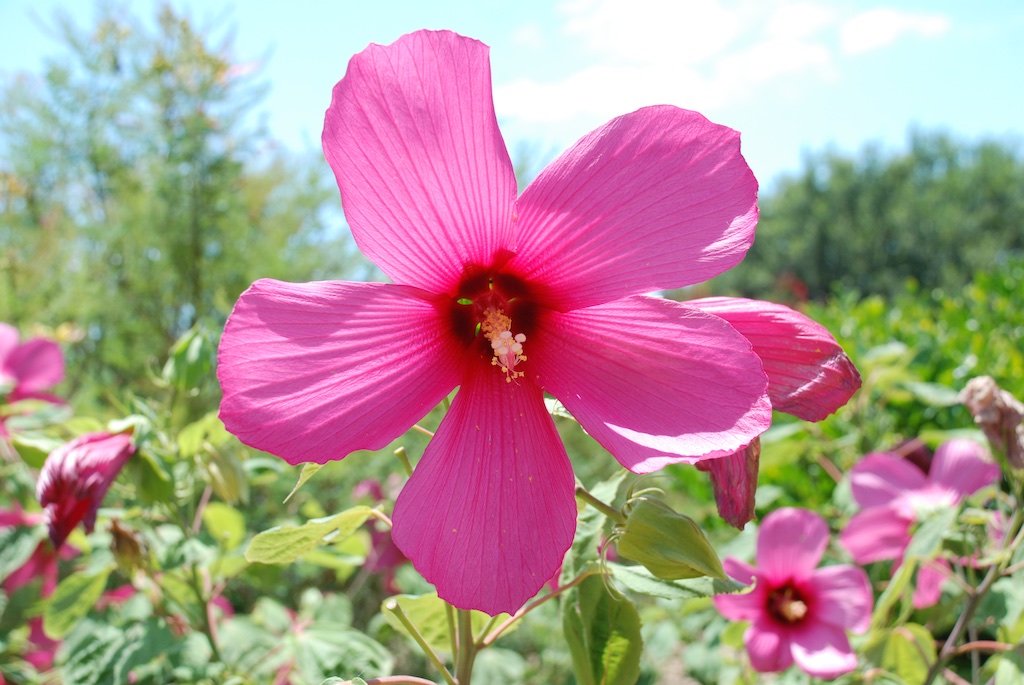


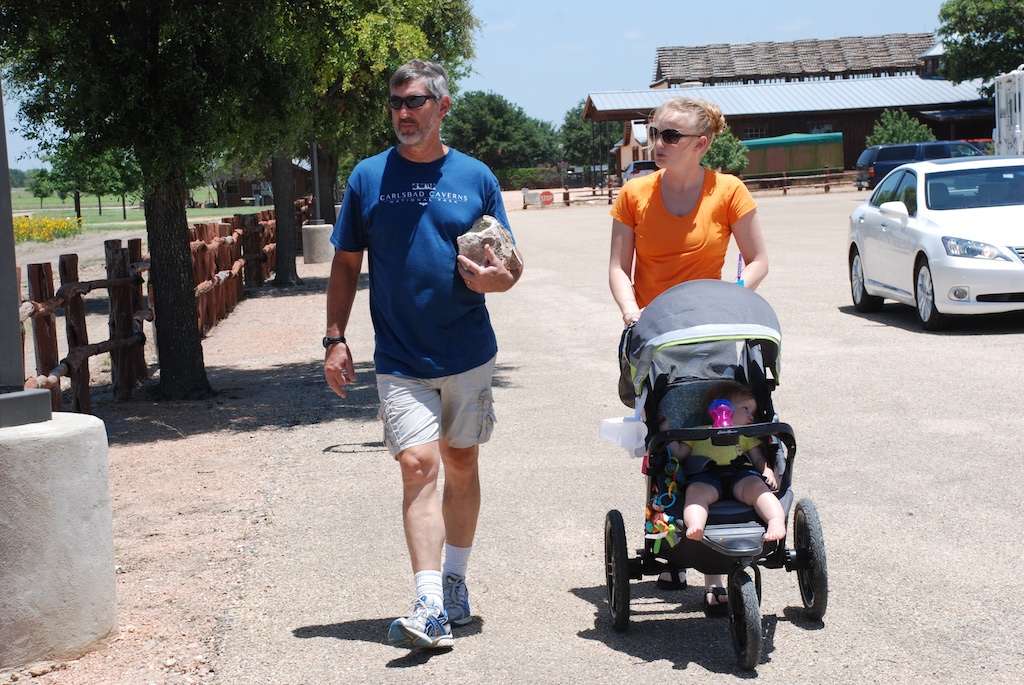



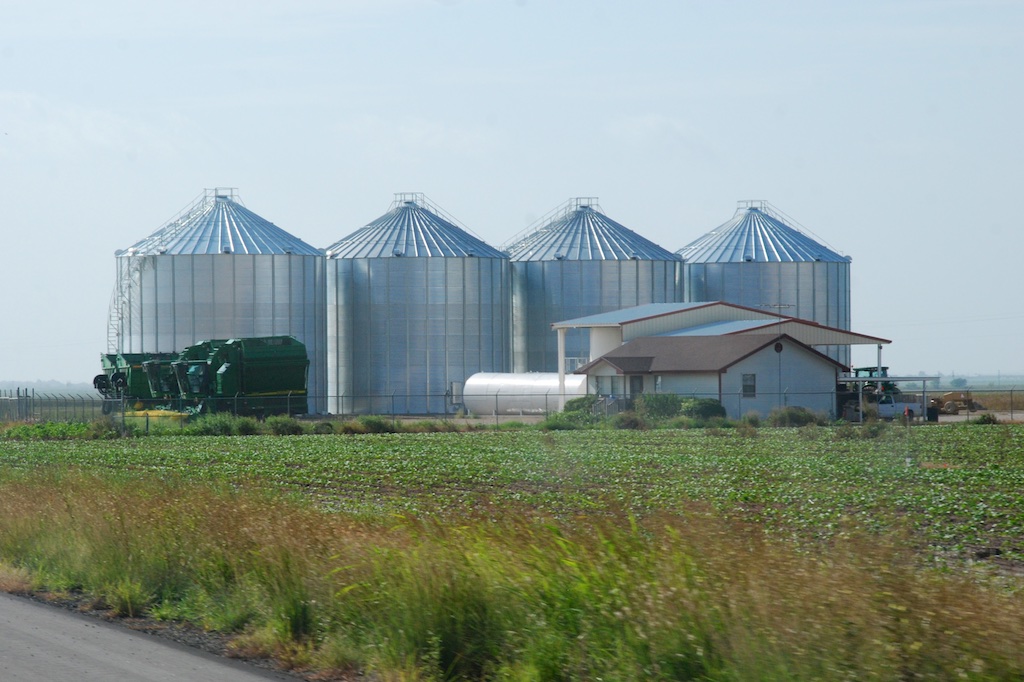

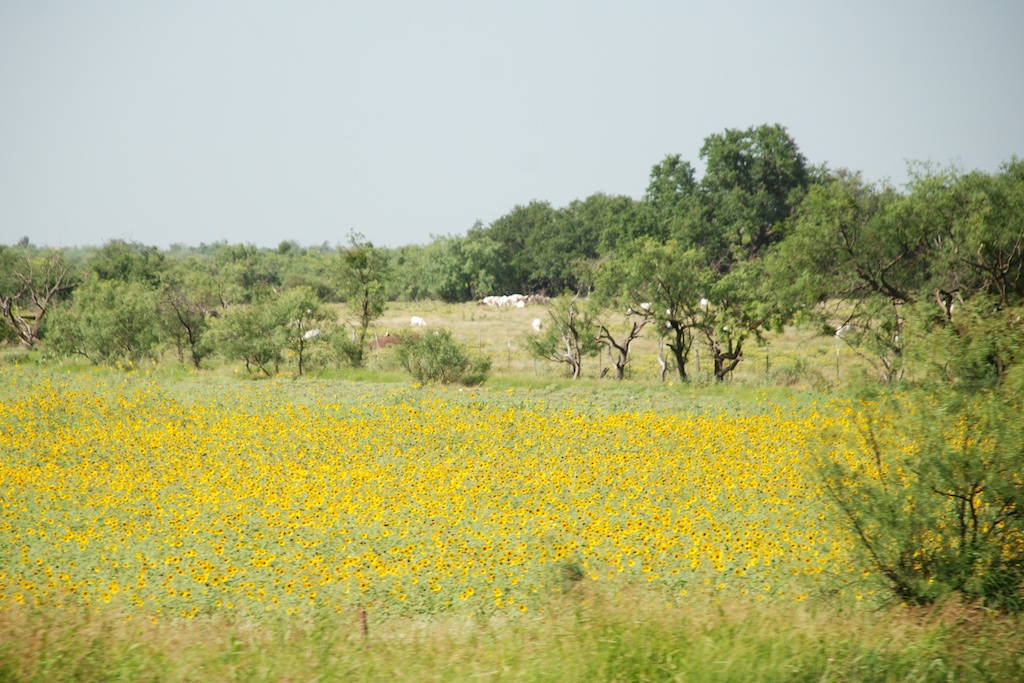
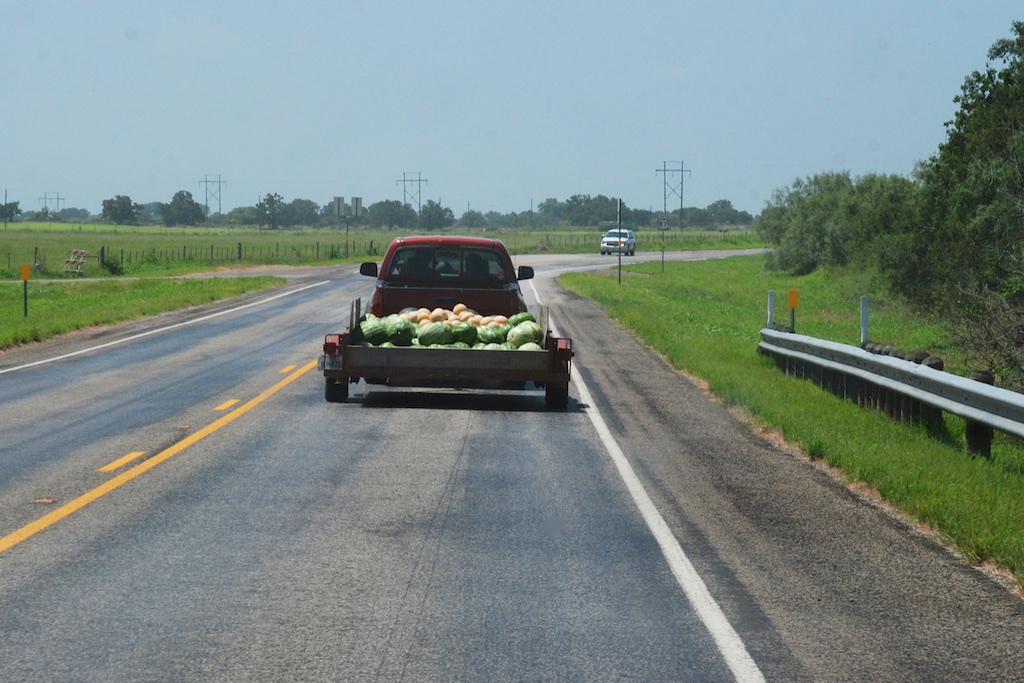
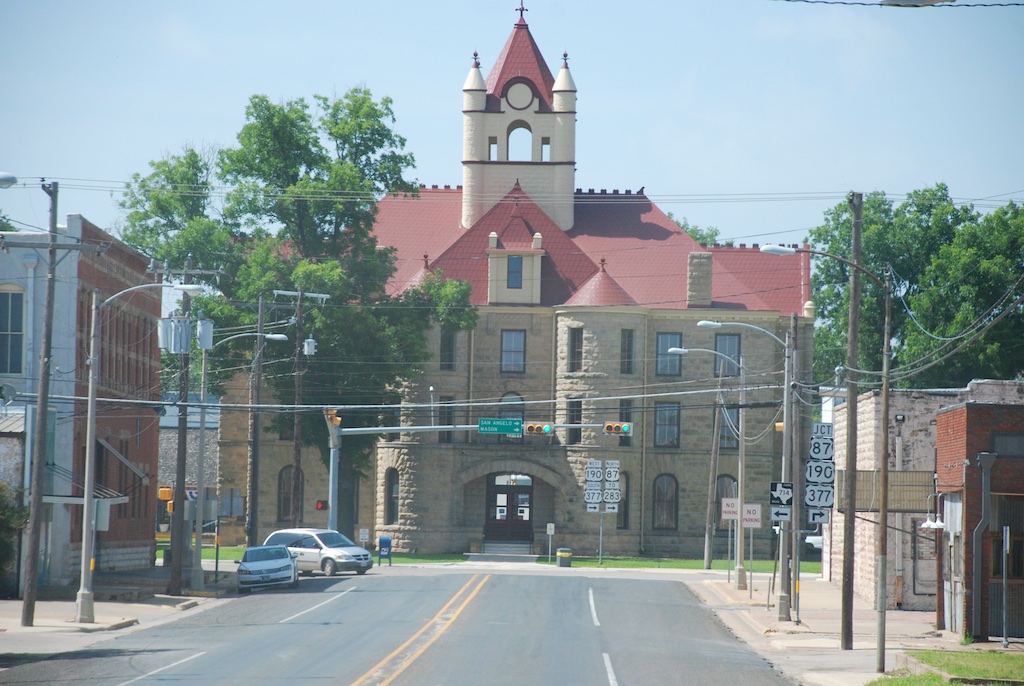
 I don't have many photos. I snapped several from the moving truck, but although some of the scenery ones are passable, it was hard to get much in town when driving through.
I don't have many photos. I snapped several from the moving truck, but although some of the scenery ones are passable, it was hard to get much in town when driving through.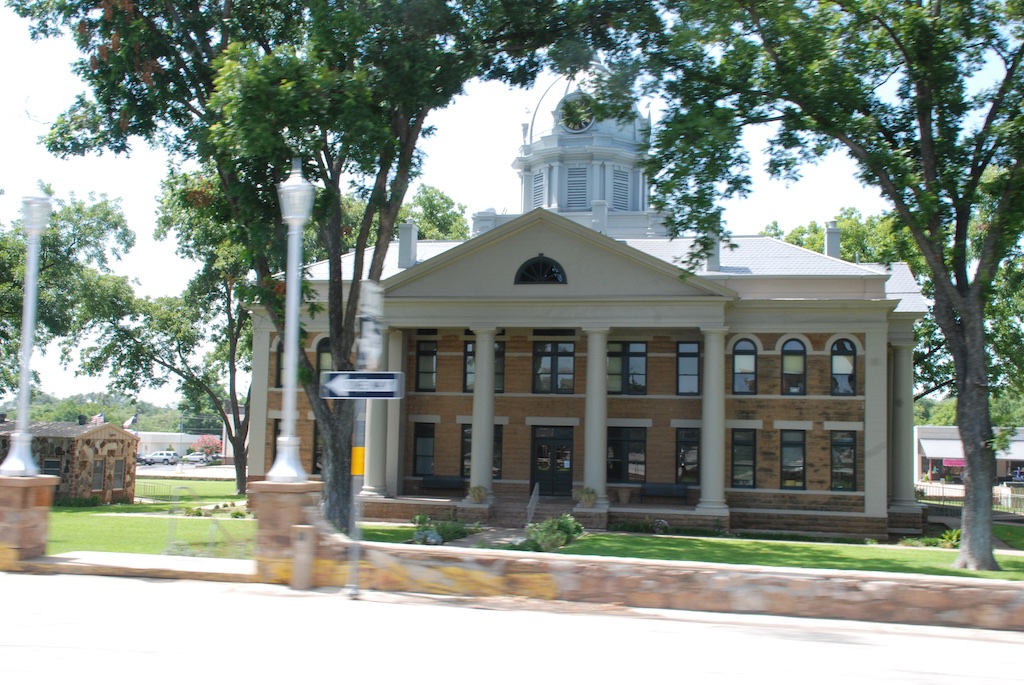 I must say that the iPhone has given me a new way to travel. We like our big map books with one book for each state. I kept that open on my lap but I continued to look up towns we passed or things listed on the map that weren't there anymore. We garnered a lot of history that way.
I must say that the iPhone has given me a new way to travel. We like our big map books with one book for each state. I kept that open on my lap but I continued to look up towns we passed or things listed on the map that weren't there anymore. We garnered a lot of history that way. 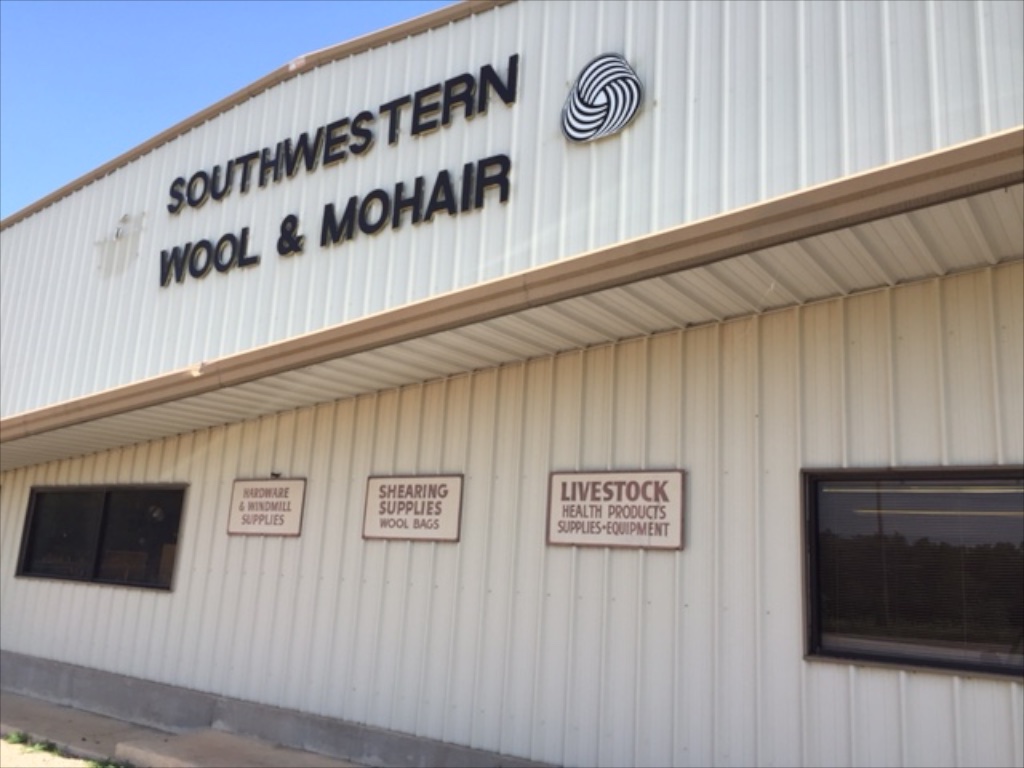
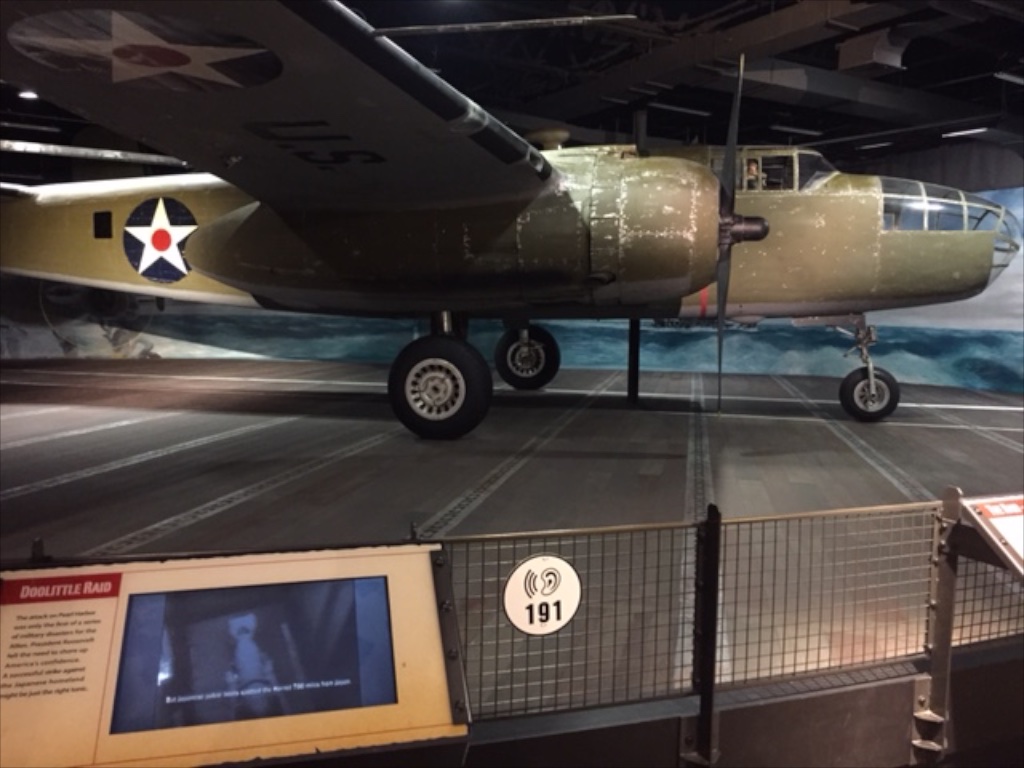
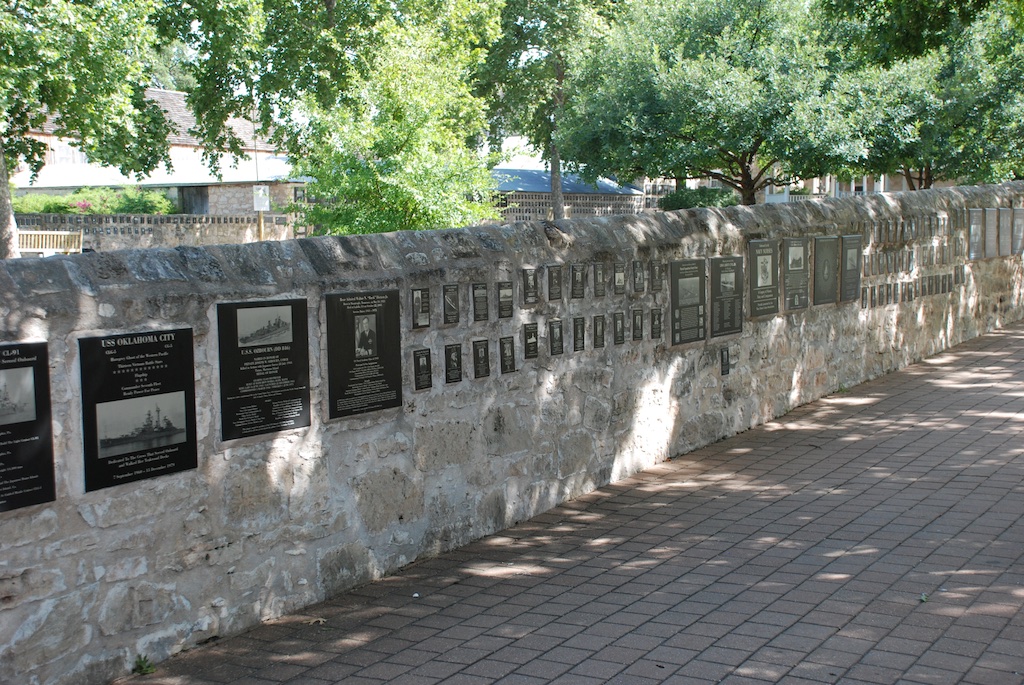
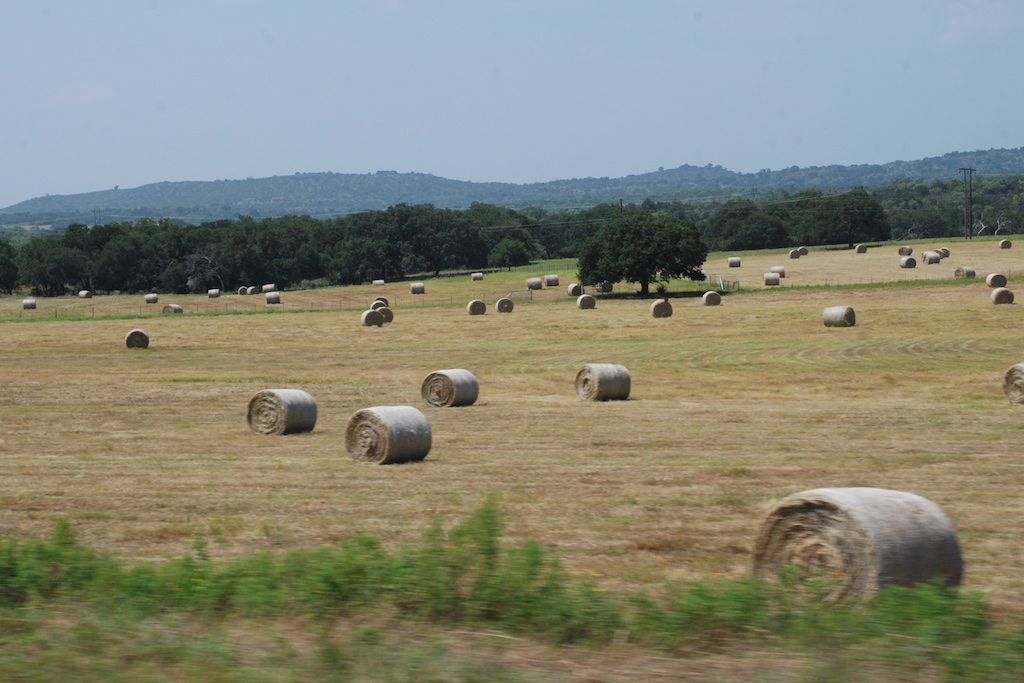 This photo doesn't look especially green because the field has just been baled but there is a bumper crop of hay.
This photo doesn't look especially green because the field has just been baled but there is a bumper crop of hay.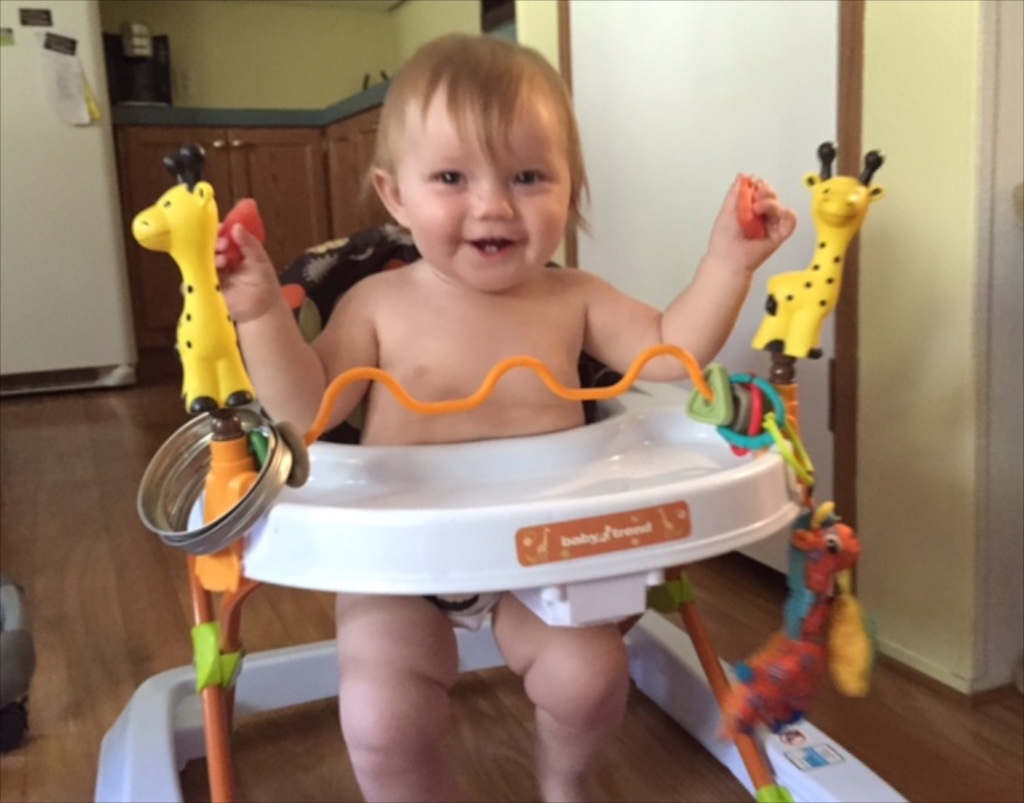
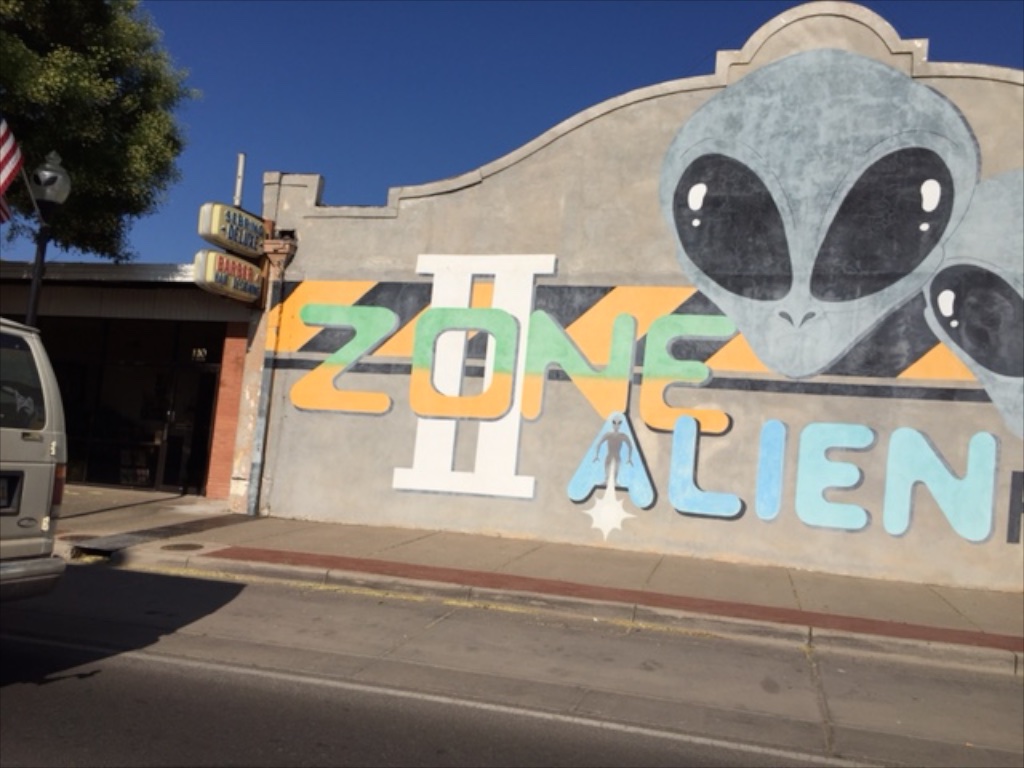
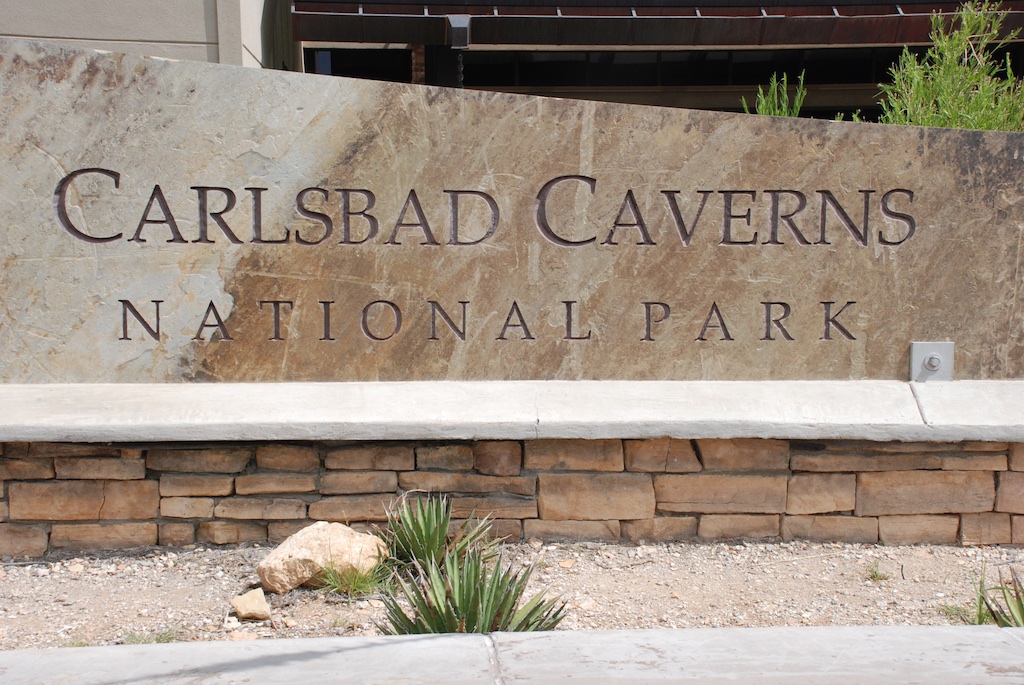
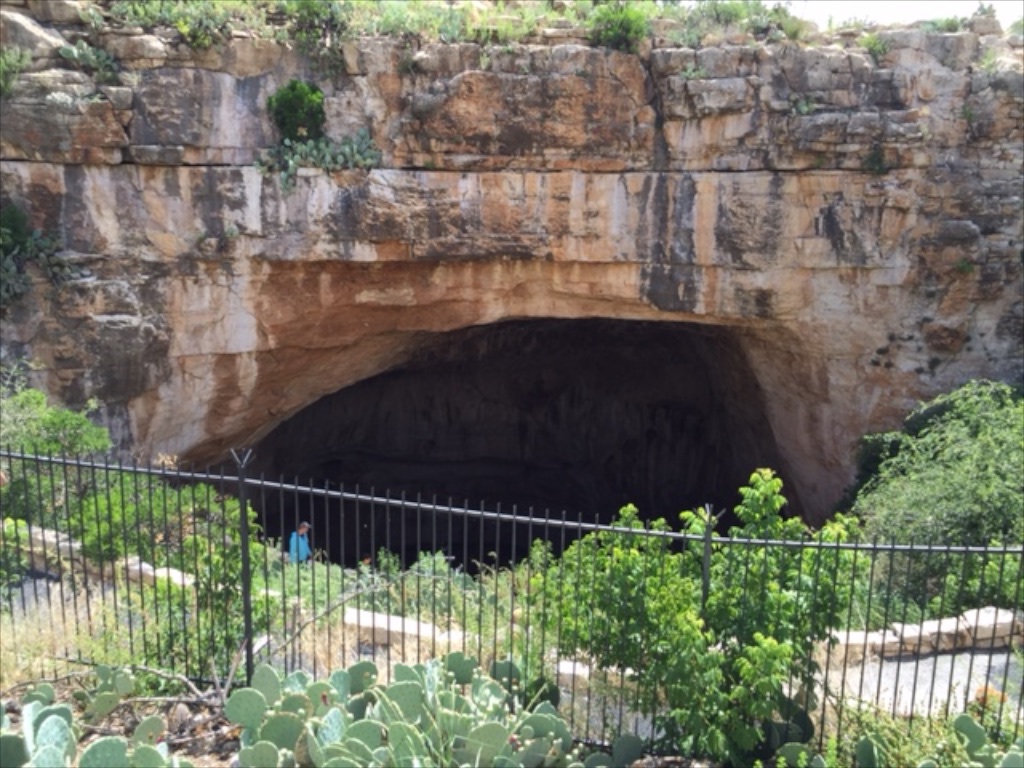
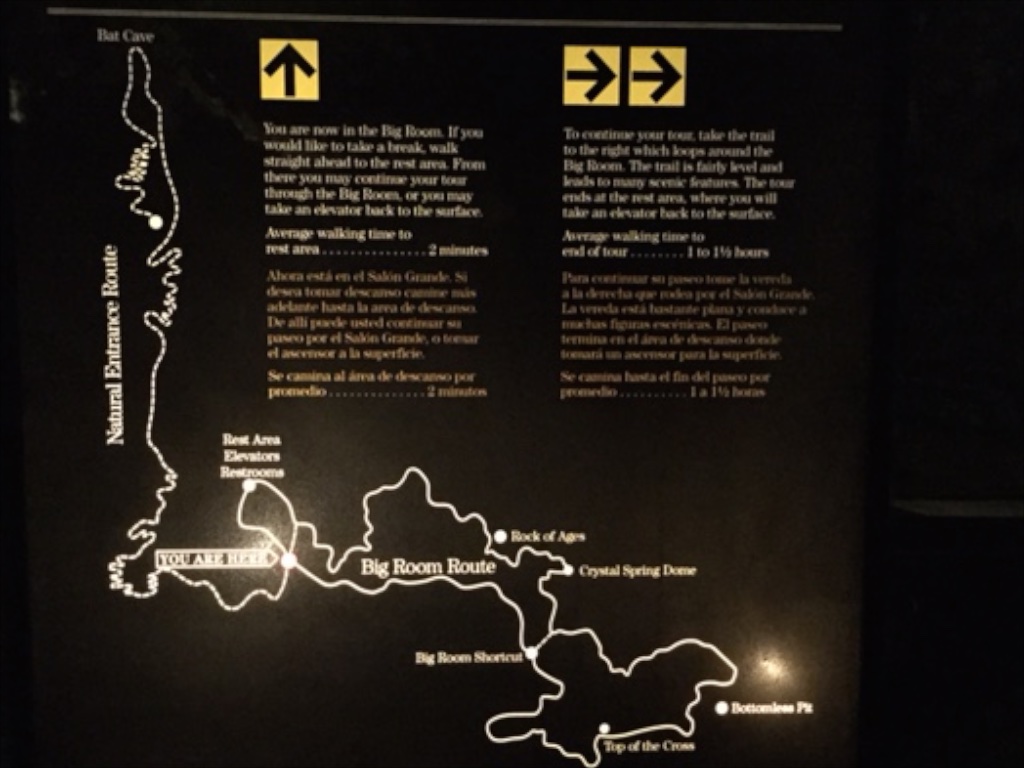
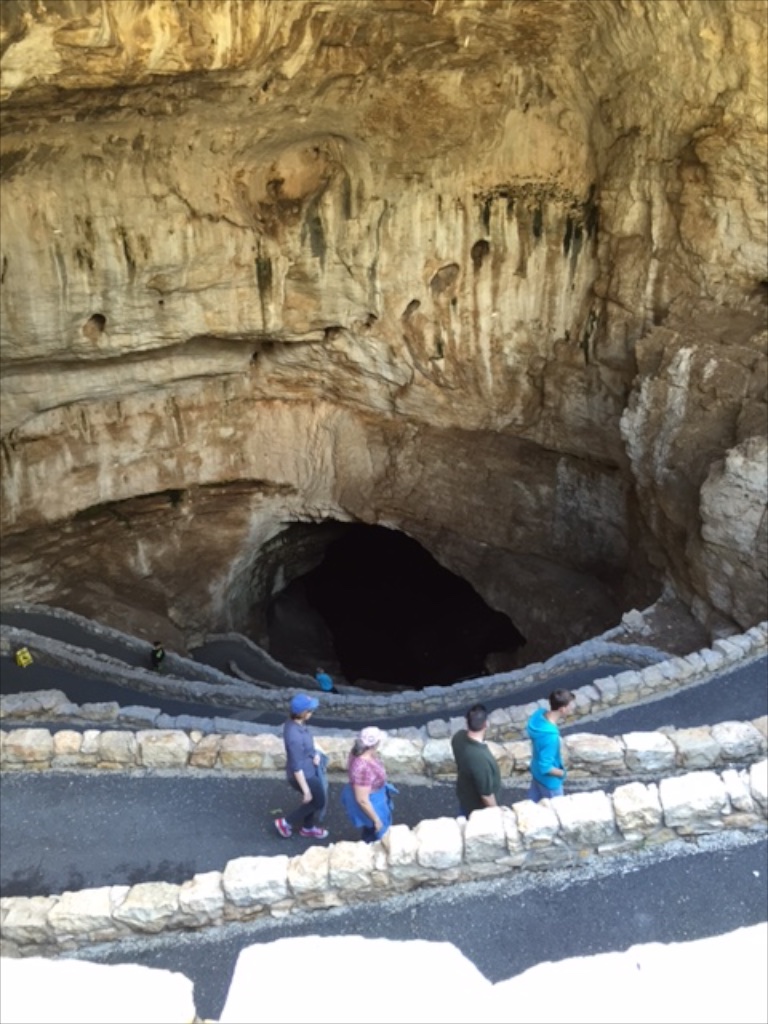 The bats roost inside the cave in an area closed to the public. Cave swallows roost in the entrance.
The bats roost inside the cave in an area closed to the public. Cave swallows roost in the entrance.